Drinking Vessel Research
As drinking vessels are a part of the brief for ceramic printing, I decided to start off looking at different cups. This started with some exhibitions that displayed a range of cups.
1001 Cups Exhibition
This exhibition took place during 2011 in the Musée de L'art et de L'industrie Andrée Diligent in Roubaix, France. The exhibition featured 100 artists who all designed 10 teacups which made up 1000 teacups with the extra one cup being an Indian kulhar. These smooth cups do not have handles and are mainly used to drink tea, they have also grown in popularity since 2011. In 2011, the kulhar was displayed by itself to emphasize its historical importance but its extinction, however, if the exhibition was more recent it wouldn't of been as The cup is also more biodegradable than glass, plastic or ceramic cups as they decompose faster. The exhibition imposed some restraints on the artists as the cups couldn't have a height of more than 8cm and a diameter of more than 10cm. The artists also had to use the same technique for all 10 of the cups they produced. This collaboration showed the range of ways cups are seen by different artists.
An Ocean in a Cup Exhibition
This exhibition featured multiple drinking vessels inspired by traditional Asian art. The artists were either Japanese or were American artists that had received Japanese training. There were a range of vessels from pitchers to cups and cups especially for sake. One piece that I thought was quite interesting was Dixkatkakucthi2 by John Dix. The article described his piece as having 'marshmallow like folds' and 'deceptively airy.' I thought describing the piece as deceptive gave it another meaning as if saying it was meant to look like something else.
Seckler, J., 2013. Loving Cups. Ceramics: Art and Perception, (92), pp.pg 42-45.

Cups 1785-1805
I then started researching cups from the 1700s and the 1800s, looking more closely at their decorative features. Cups with vertical fluting have small ridges which would normally leave a bumpy texture at the rim of the cup. From 1780 - 1795, cups with vertical fluting were popular and from 1795 - 1805 this developed where ridges were then twisted and a wavy pattern could be seen on the outside of the cup. The movement of the twist of the flutes is called shanking and some potters added flowers or leaves in between the fluting in order to create a more decorative pattern. For more can like shapes, the flutes on those were known as 'hamilton flutes' and looked more rectangular.
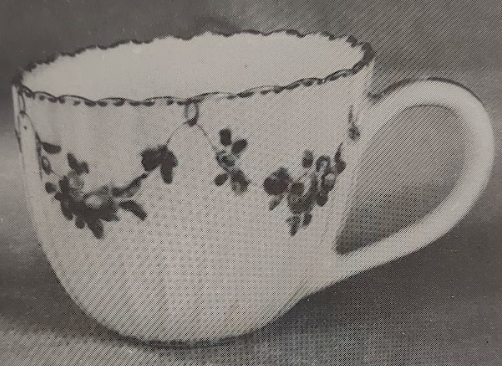
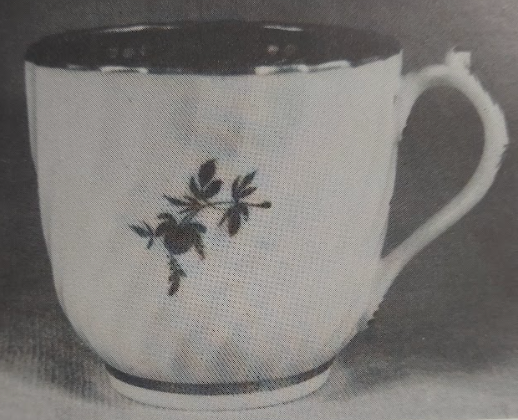


There are multiple shapes of cups within the 18th and 19th century. One shape is a porringer shaped cup, a porringer is a small bowl with a handle that is used for soup or stew. The shape of this is normally a large round surface area at the base of the cup with the walls going straight up and slightly flaring a bit at the top of the cup. The 'French Shape' cup is a cup that is almost pinched a third of the way up the cup and is then flared at the upper part, almost square like. The 'bute shape' cup is a straight sided cup with a slightly flared rim, this normally has a slightly rounded base instead of a flat base. Some tea and coffee cups are referred to as cans as they have a completely flat base and resemble a metal can but as a ceramic cup.
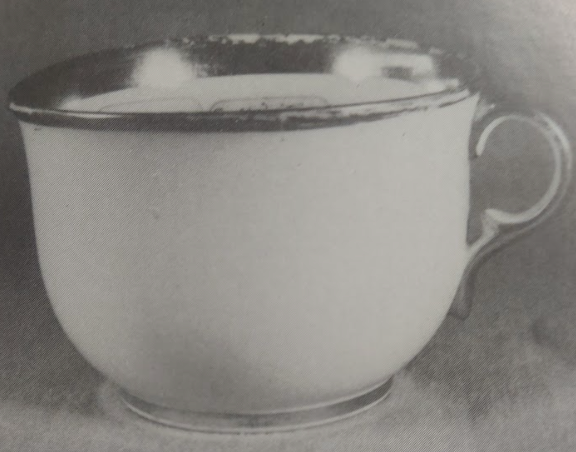
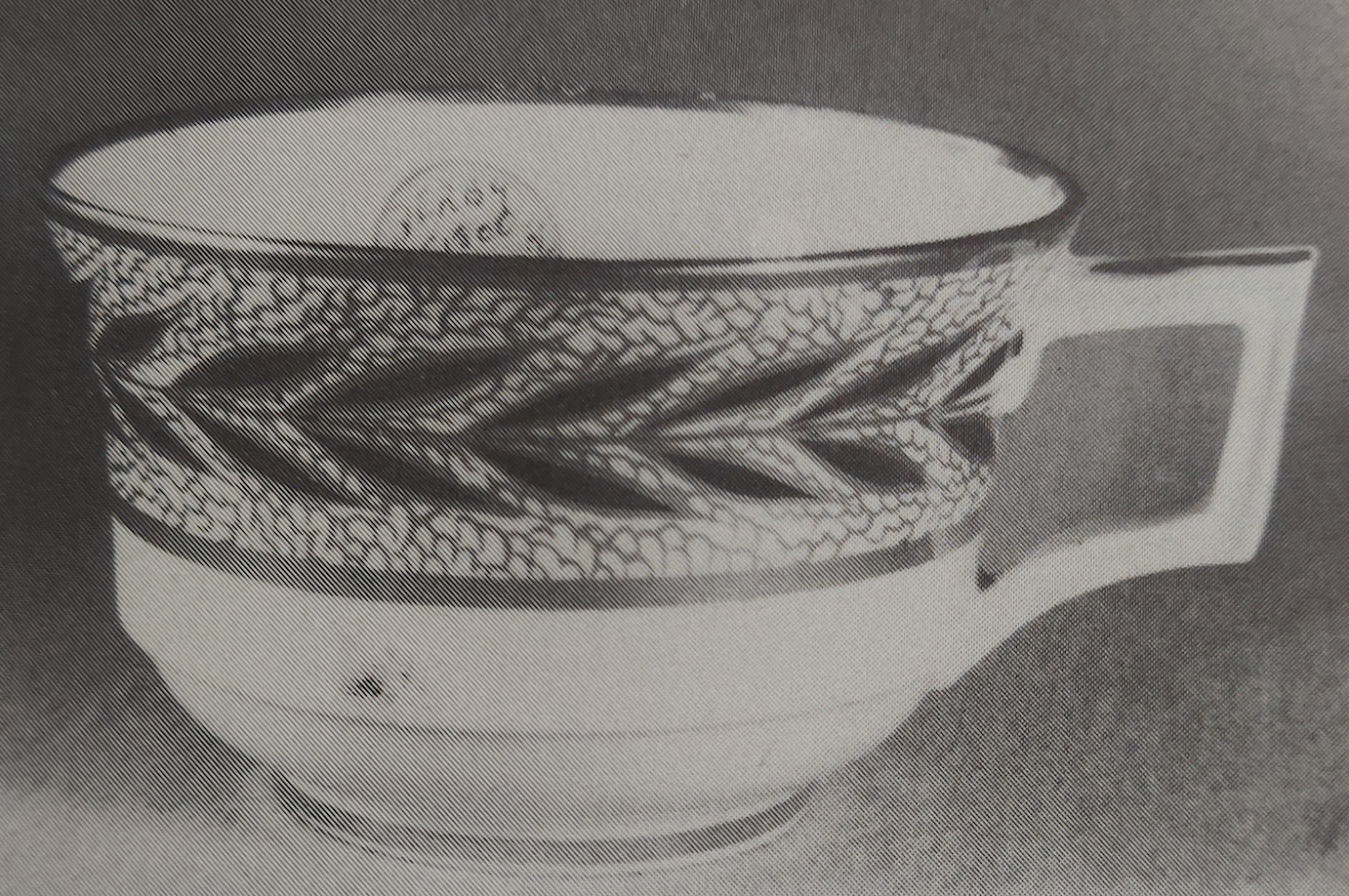
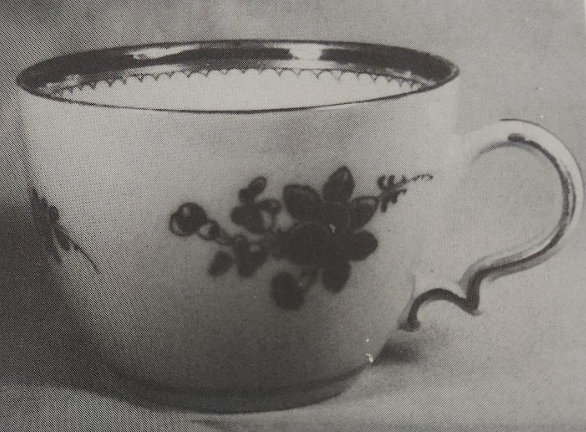

Cup handles also have multiple different types. The loop handle is one of the wider known ones as it loops from the top of the cup to the bottom to allow space for the hand of the user. There are different variations of the looped handle, the thumb rest that is placed at the top of the loop allows the thumb to rest and gives it a place to go. The looped handle with the double click below has a small space to allow one of your fingers to rest underneath the handle, its another way to guide the user to put their fingers where the designer thinks it should go. There are also single kicks on handles which gives the handle more of a square like quality. The inner spur on a looped handle is like a thumb rest but it goes on the inside of the lower part of the handle. This seems like less of a guide for where the fingers should go but more of a decorative feature on the handle.

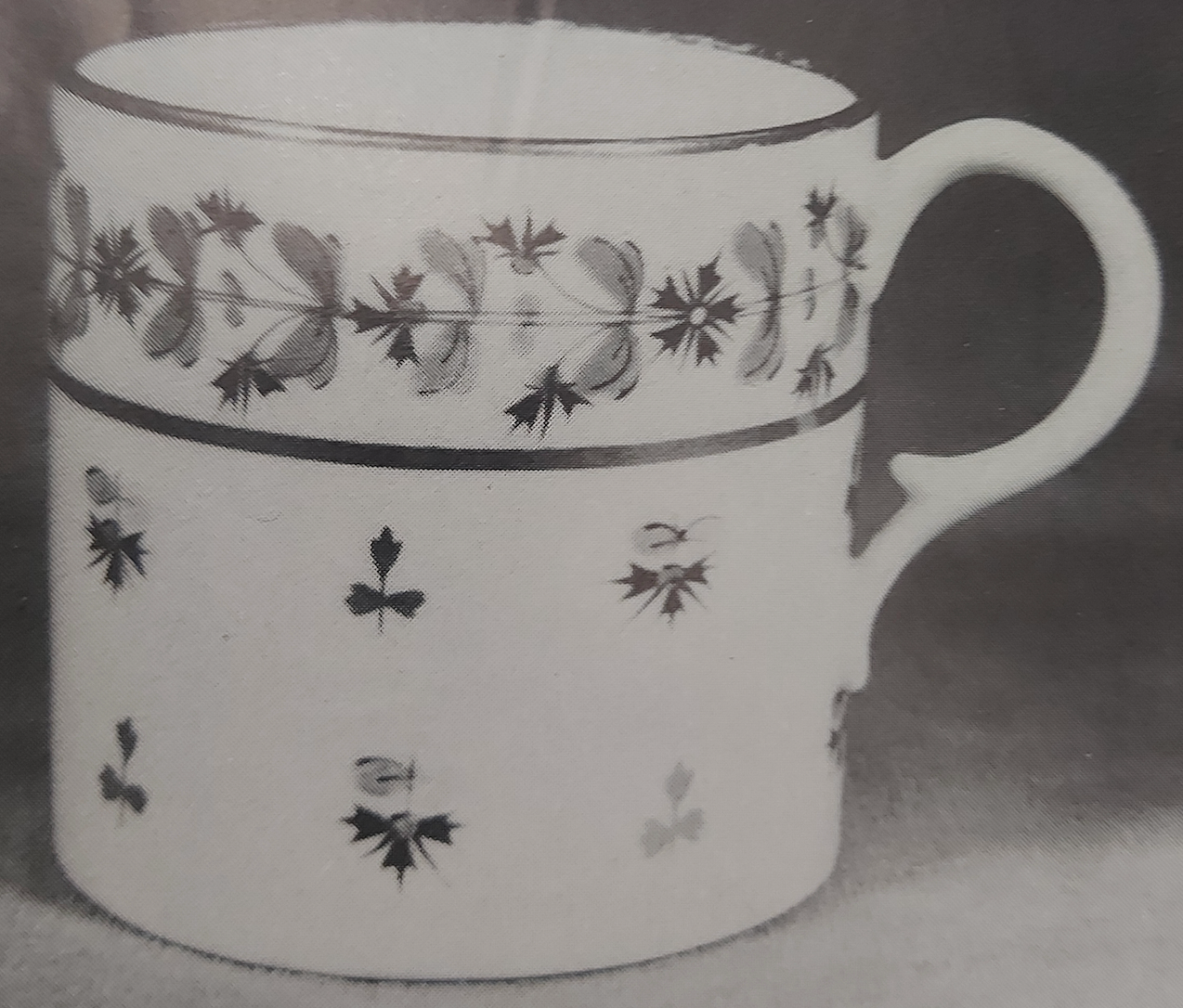
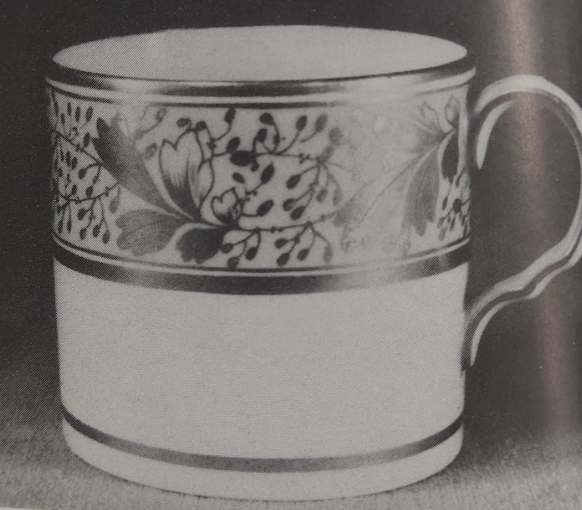
Worcester ring handles are handles with a full circle attached to the upper part of the handle. These handles were typical from the Grainger Factory and Chamberlain Factory, both in Worcester. This photo from a children's tea set in the 1800s shows the perfect circular handle with the loop looping it to the bottom of the cup for extra support.
https://www.museumofroyalworcester.org/discover-learn/collections/childrens-tea-set/
Berthoud, M., 1982. An Anthology of British Cups. Kent: Micawber Publications.


Ancient Greek Ceramics


Kylix Cups
Kylix cups were made by the Ancient Greeks. This cup shown was made in 520 BC and although it looks more like a bowl, the two handles make it a drinking vessel. The diameter of the cup is 28.8cm and with the handles it is 36.4 cm. In Greek literature, kylikes are mentioned a lot when it came to sailing and drinking parties. Kraters were used to mix wine and water and kylikes were used to drink it. At symposiums (drinking parties), the vessels full of liquid din't just have a functional value but also an aesthetic value. The visual images on the vessels of different men and women at parties or in processions mirror their culture and what they were doing. This is shown by the photos of a kylix which shows a symposium where men are being fed grapes and images of kylikes are shown on the edge of the bowl. Some imagery on these kraters and kylikes were mythical and could be seen as representing what happens in the brain of those who are drinking a lot of wine.
Dionysus was the god of wine and fertility and as wine was made and drank out of using these drinking vessels, there was a lot of imagery of Dionysus with women, wine and grapes.
https://www.metmuseum.org/art/collection/search/254894
This kylix shows dolphins and grapes as the more natural imagery coming out of a boat where Dionysus is laying. This kylix also links back to sailing which was often used as a metaphor for symposia. Dolphins were very popular in Ancient Greek culture and their name were 'hieros ichthys' which meant sacred fish. They were thought to be saviours and there are stories of dolphins saving people from drowning.
https://www.workingabroad.com/blog/the-mythical-attraction-of-greek-dolphins/
http://arthistoryresources.net/greek-art-archaeology-2016/archaic-BF-exekias-dionysos.html
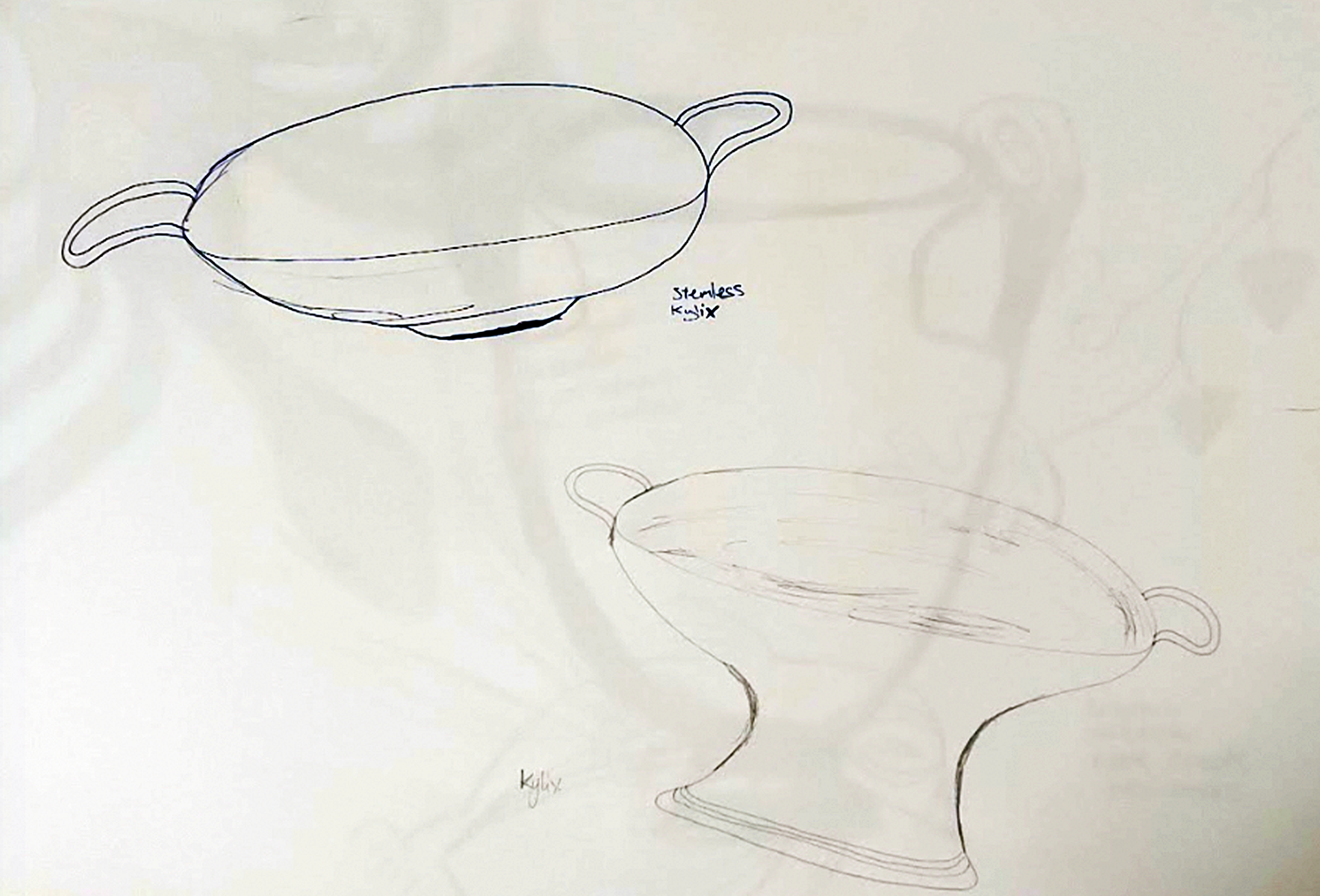
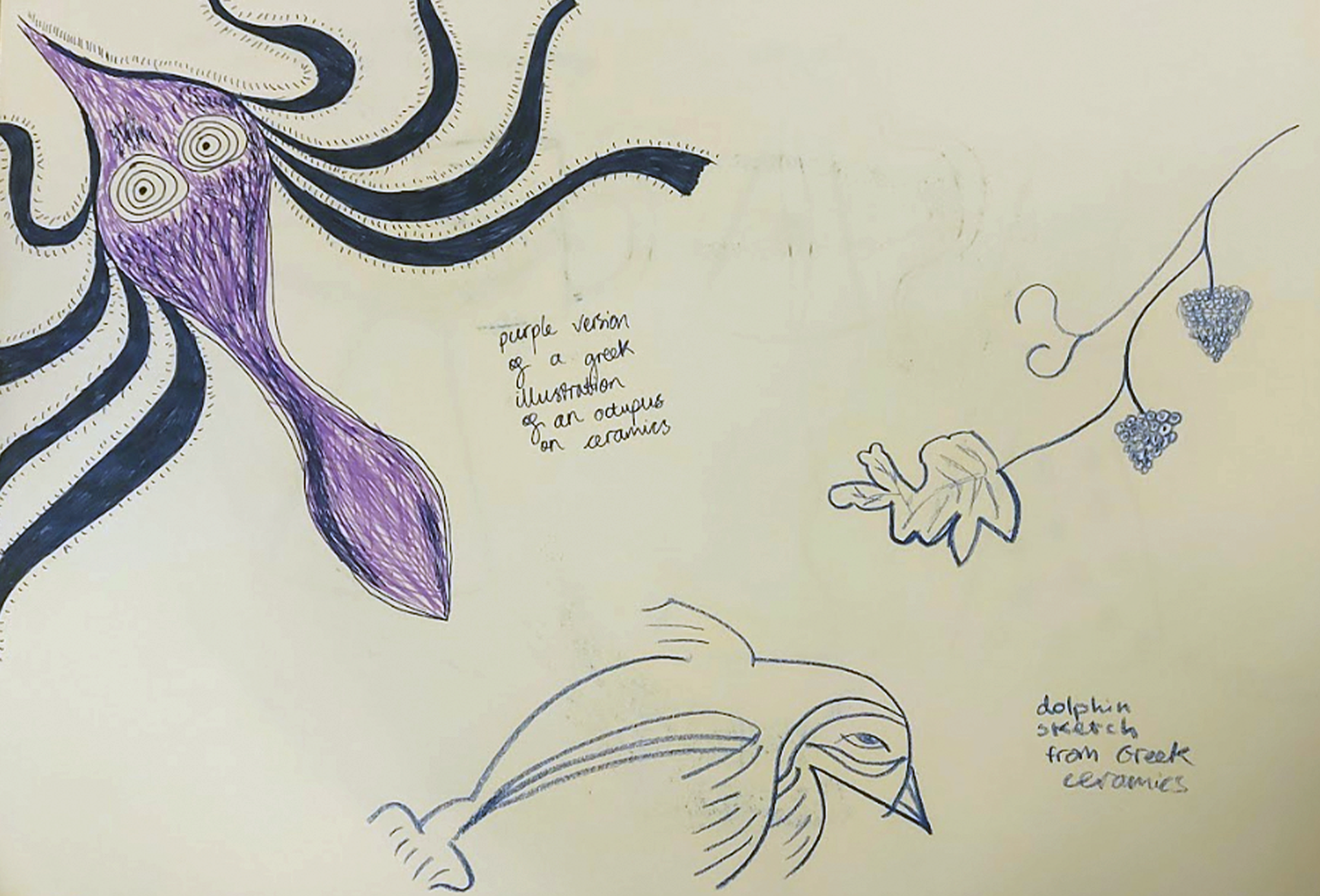
These two scans are part of my sketches of Ancient Greek ceramics and some imagery that I had seen throughout my research, it also gave me a chance to practice drawing these Ancient Greek ceramic forms.
Investigating Clay
Inspired by Ancient Greek vessels and the illustrations on their ceramics. I decided to put these into a modern context. Making simple illustrations on clay that represents where people in the modern day use ceramics, especially coffee cups.
I decided to start by engraving into the clay, creating stick figures that were sitting down and drinking coffee. The right side is scraped to see of if had any effect or neatened the engraving. I found that this added some scrape lines which I don't think add to the illustration but maybe i could see if these scrapes could be used in another way.
I then made thicker and less harsher lines that were more curved. I wanted to illustrate the waiting for coffee as this is not thought of as an enjoyable task. Maybe the least exciting parts of being in a coffee shop could actually be illustrated into the mug and turned into decoration.
I then used a more textured side and engraved into it, using a mix of definite and more rounded lines/shapes. I created the scene of two armchairs, a table and rounded lights to create a scene that I'm more familiar with if I go into a coffee shop. I thought the chairs were quite effective and I liked their shape in the clay.
I then used 3d textures to create the outside of a coffee shop. Right now I'm creating quite simple shapes and hoping to progress to more complicated illustrations that could potentially be used on a cup or dish. Could a 3D picture be used inside a dish? Textured dishes have been used for trinket dishes or even as graters for garlic as the bumps on a dish are able to mash it. This is something that I have seen a lot recently on social media. This is something that I will look into within further research.
Textured Dishes Research
Following on from my clay investigating, I found that a dish used for grating or mashing garlic is called a mortarium. The mortarium you can see on the right is from the Roman period and is thought to be from 1st century AD. The pot was found in Hertfordshire and was made by Sollus, this is shown by the text of SOLLVS F around part of the dish. These types of dishes were baked with grit in it to create a textured surface which would puree the garlic or whatever ingredient you rubbed against it.
Looking further in to mortaria, I realised there are lots of things to think about before making a mortarium. The wall and rim of the bowl/basin has to be 'sufficiently robust' so it can be gripped firmly. This is to help the user grate the ingredient without dropping the bowl. The grit can also be on the rim as well as the bottom of the dish to have easy access for more curved ingredients. Some mortaria even have spouts to pour out any liquid contents.
The Little Garlic Plate. n.d. About. [online] Available at: <https://www.thelittlegarlicplate.co.uk/history> [Accessed 11 October 2022].
The British Musuem. n.d. mortarium. [online] Available at: <https://www.britishmuseum.org/collection/object/H_1973-0702-16> [Accessed 11 October 2022].
British Museum, 1973. Mortarium 1st Century AD. [image] Available at: <https://www.britishmuseum.org/collection/object/H_1973-0702-16> [Accessed 11 October 2022].
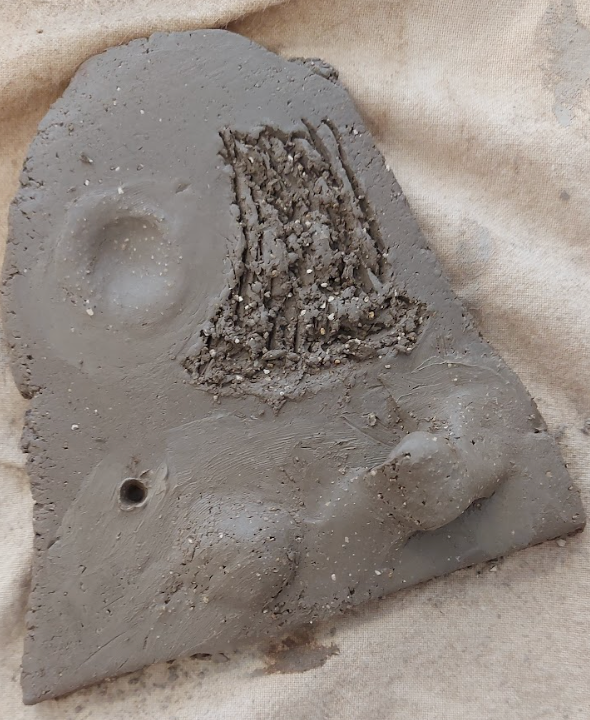
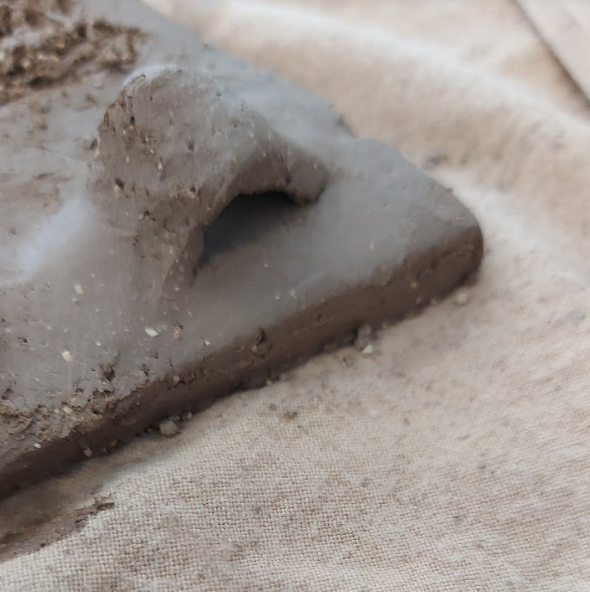
Inspired my research into textured dishes, I then looked at different ways to create 3D textures and engraved textures in clay. From creating bumps and holes to scratching the clay to create a 'muddy' texture. I don't think i'll use this but it did make me think about texture and how that affects the feel of the cup.
Handles on Greek Ceramics
Ancient Greek handles in ceramics were sometimes rolled but also sometimes pulled. The pulling of handles can be seen in vases and also rhytons. In Ancient Greece, rhytons were drinking cups that had the shape of an animal on it. Some handles also had a concave on the outside of the handle which could hold a space for the thumb while drinking. In this photo (top) these handles are from two rhyta and shows the concave shape from the pulled handle. Does this make the handle more accessible? Although there is a way to rest one or multiple fingers on the cup I think that the potential for the handle to dig into the skin or be less comfortable to hold is greater than if the handle was rounded. Handles within Ancient Greek pottery did not only have a curve for the hand, ceramic pieces also had horizontal handles that would usually sit on top of vases or kraters. Some horizontal handles were thick enough to be in the shape of a scroll or have small figures like heads at the cross section of the handle. One piece that I was interested in due to its handles was this wine cup (bottom) with two different handles, one horizontal handle and one vertical handle that was wider, both pulled.
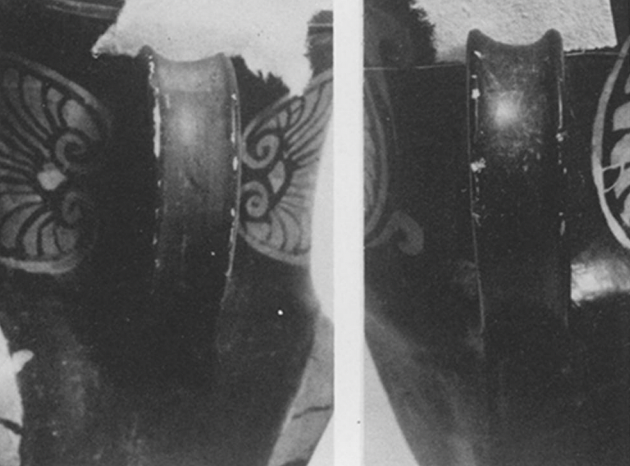
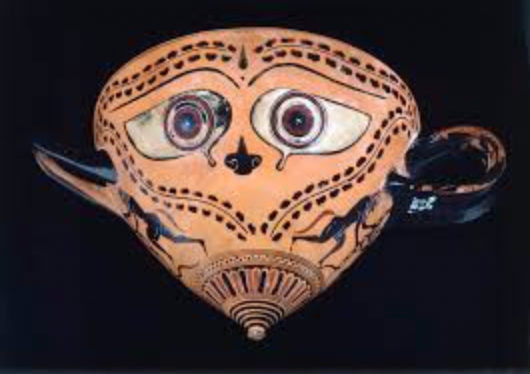
While exploring Greek ceramic handles, I came across a wide range of different Greek ceramics, some used during Ancient Greek rituals or ceremonies. A main example of these are Phials, these were used within libations. Libations were one of the most common spiritual rituals in Ancient Greece where drink would be offered up to the Gods. The most common liquid that was offered to the gods was wine and this was done by pouring wine or oil or honey from a wine jug into a Phial. As only a small amount of liquid needs to offered to the gods, Phiales were flat and as seen by the photo, is more decorative than functional. This is shown by the gold acorns and bees on the bowl.
Some vases were called figure of eight vases due to the handle shaped like an 8 (shown left). The Minoan civilisation were known for these vases and also used the figure of eight in other objects like their shields (drawing shown right). I believe that although these handles are decorative - i believe that they are also functional and may even make it easier to grip.
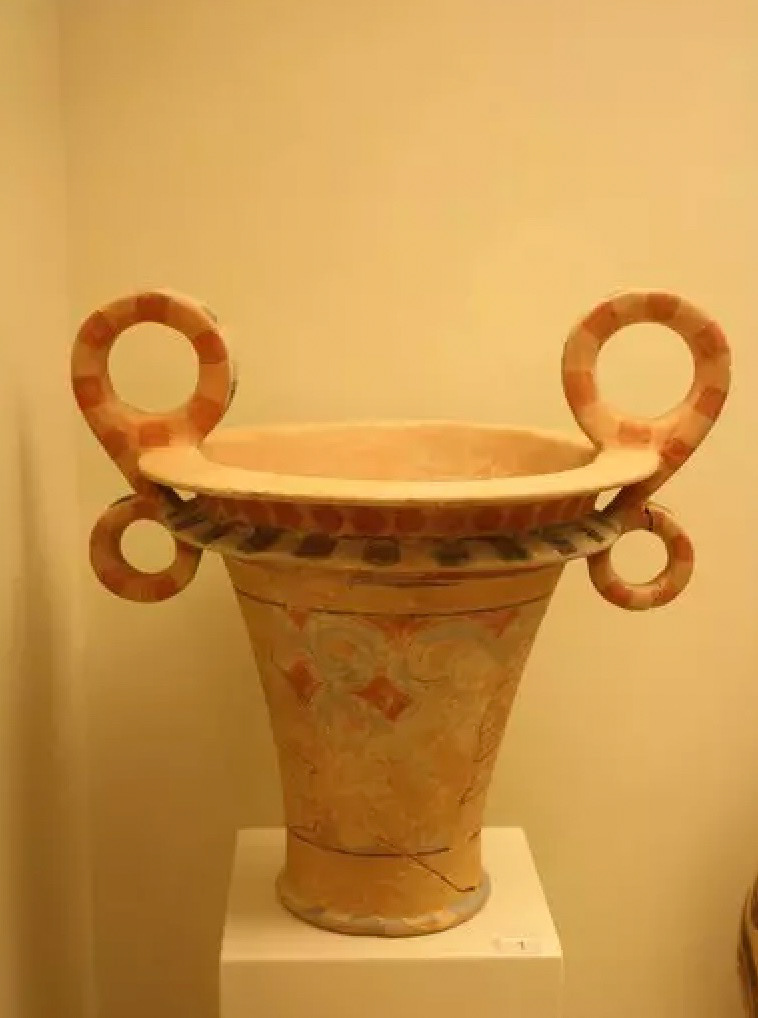
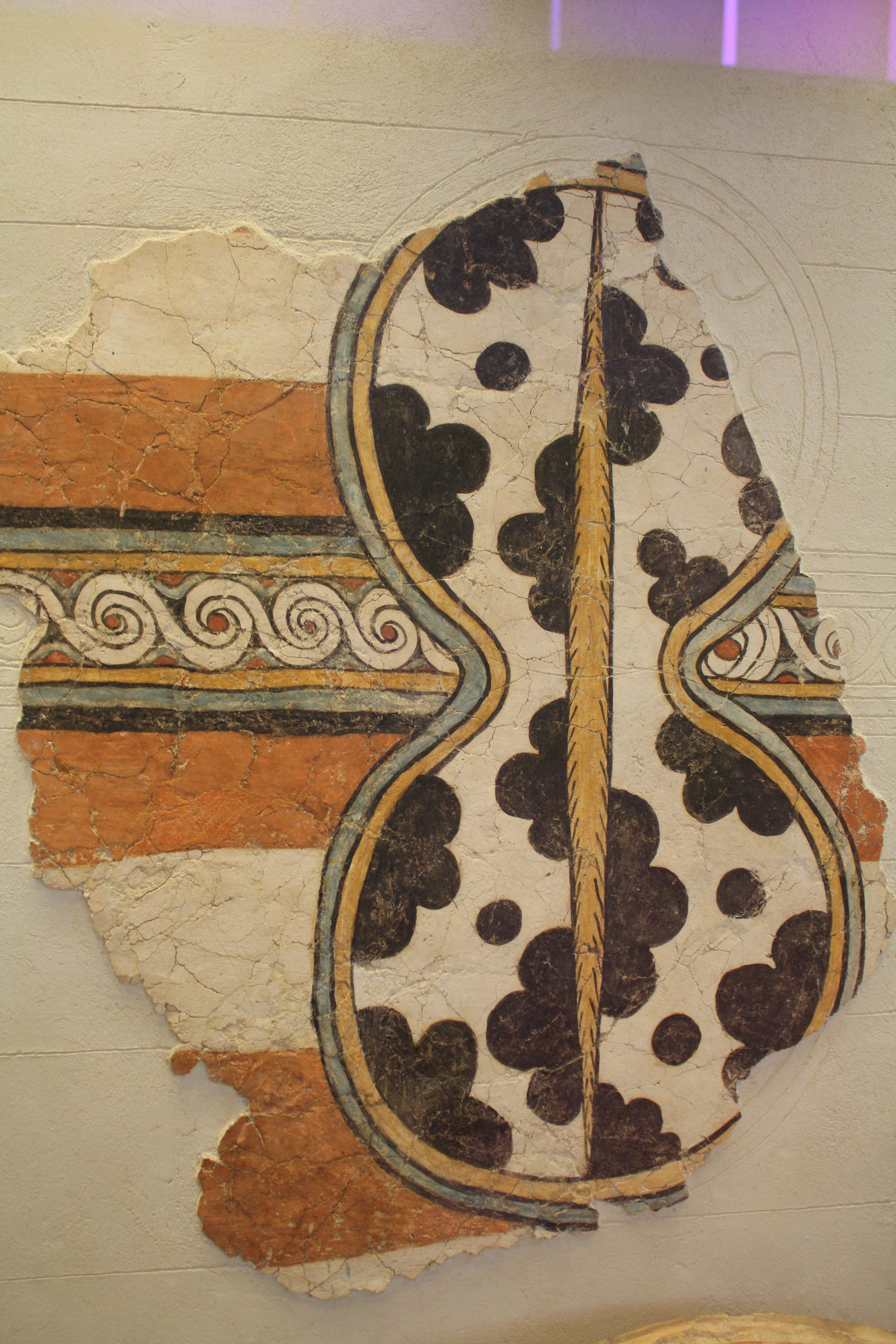
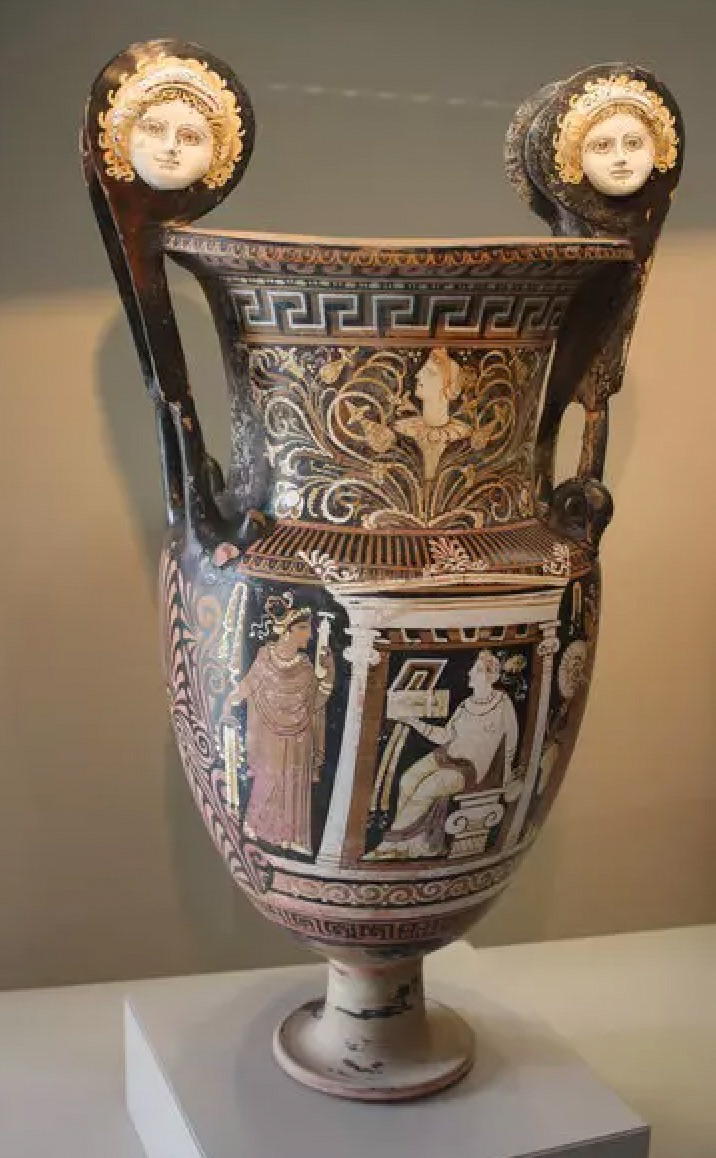

This krater (left) - called a volute krater, is a krater where the handles resemble a scroll. The word is taken from the word for a spiral shaped mollusc called a volute (right) which I thought was quite interesting as it draws on the similarities between spiral shells and scrolls. Could any other handles be inspired by sea creatures or any other interesting shapes I can see. The scroll is a very recognisable part of Ancient Greece through drawings and icons, are there recognisable shapes from the modern day that could potentially be put into handles? This is something that I could look into within further research.
reference 44 Burkert, W. and Raffan, J. (1985) Greek religion : archaic and classical. Oxford: Blackwell (Ancient World). Available at: INSERT-MISSING-URL (Accessed: October 21, 2022).
Websites/articles I've used
https://www.worldhistory.org/article/489/a-visual-glossary-of-greek-pottery/
https://www.jstor.org/stable/pdf/4166375.pdf
https://www.jstor.org/stable/2792964?seq=2#metadata_info_tab_contents
Pictures I've used in this section
https://www.britishmuseum.org/collection/object/G_1837-0609-37-a
https://www.metmuseum.org/art/collection/search/255122
Modern Ceramic Handles
After looking at ceramic handles from Ancient Greek and how they were made or some inspirations. I wanted to look at ceramic handles that were maybe influenced by objects or other forms seen in the everyday.
These ceramic pieces by Tina Tsang uses female legs as the handles for a lot of the pieces in her tea service. These handles which are probably not as functional as your average handle, puts legs at different angles to accommodate as handles for objects such as a tea cup, a sugar caddy and milk pourer.
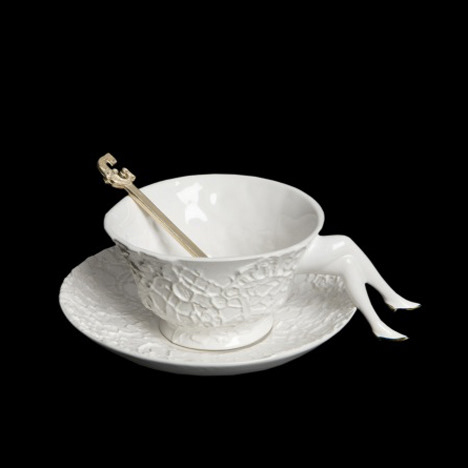
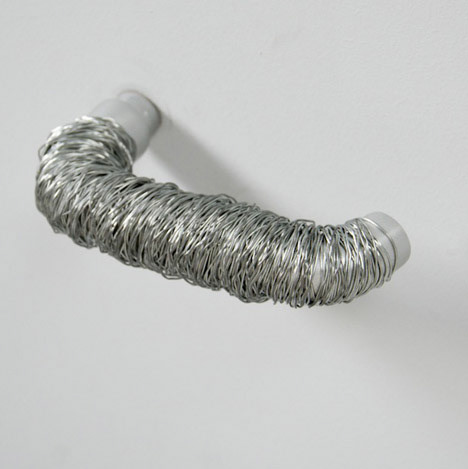

I also looked into door handles and was interested by these textured door handles by Rene Siebum. These door handles are made out of many different materials - many that you wouldn't see normally - and makes the user think about texture when using the handle. These materials ranged from latex, melted plastic (right), chipboard to iron wire (left). The texture of the handle is important as it is the part of a mug that the user interacts with the most and I want to experiment with texture as well as form when making handles.
This teapot called Mistea by Shweta Jain is a teapot inspire by the shape of the snail. The circular handle circles around the whole of the pot, with the snail tentacles being the spout that where the tea comes out. Because there are two tentacles, the tea is able to pour into two cups as well as one. There is also a tail that is able to act as a stand when the pot is at a resting angle. I really like this piece as it is inspired by all parts of the snail and uses these different parts to create a functional teapot that is also aesthetically pleasing.

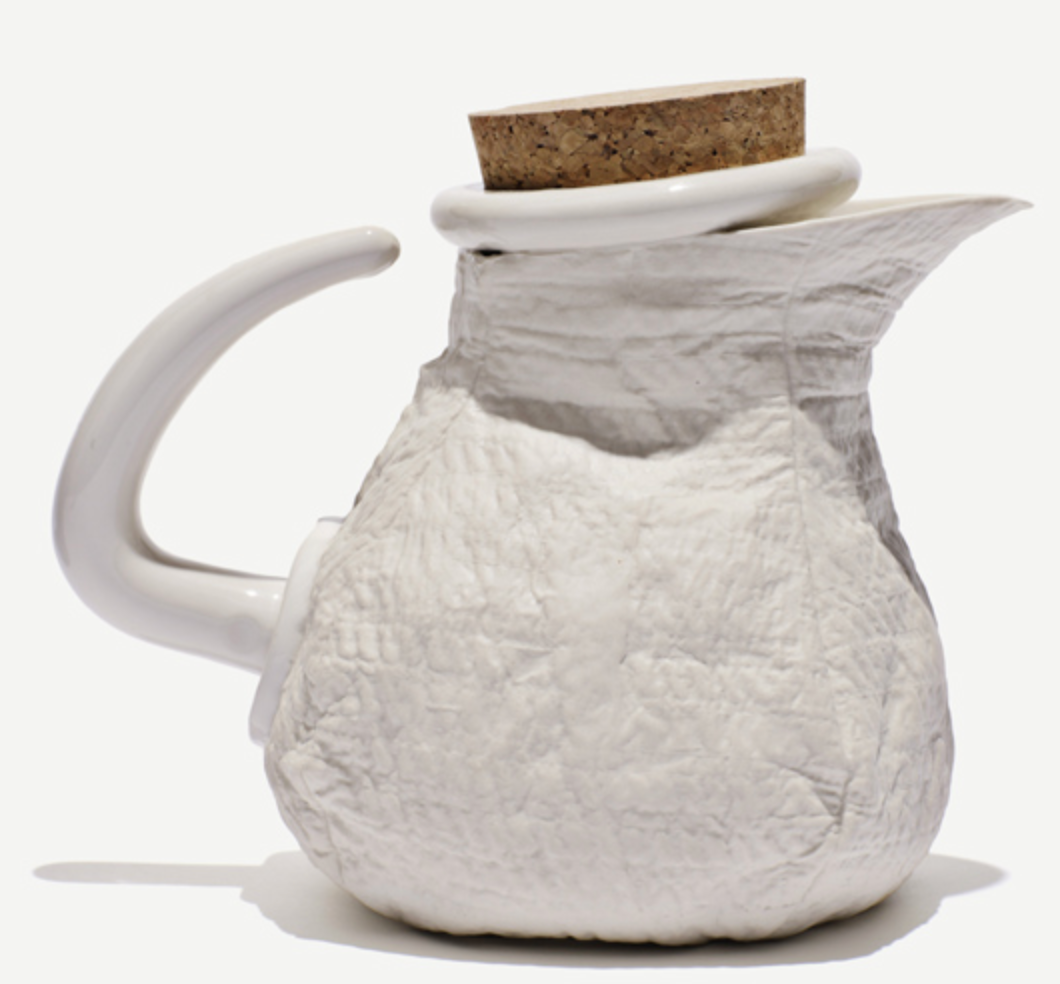
I also found a teapot that used a handle typically used for a door. The handle is at a vertical angle and is used in this piece as it is a recognisable shape and material. The rest of the teapot is porcelain which has been cast in cloth to reproduce that texture. The teapot is supposed to represent homeliness through these recognisable elements within the pot - an item that within itself represents the home or the user.
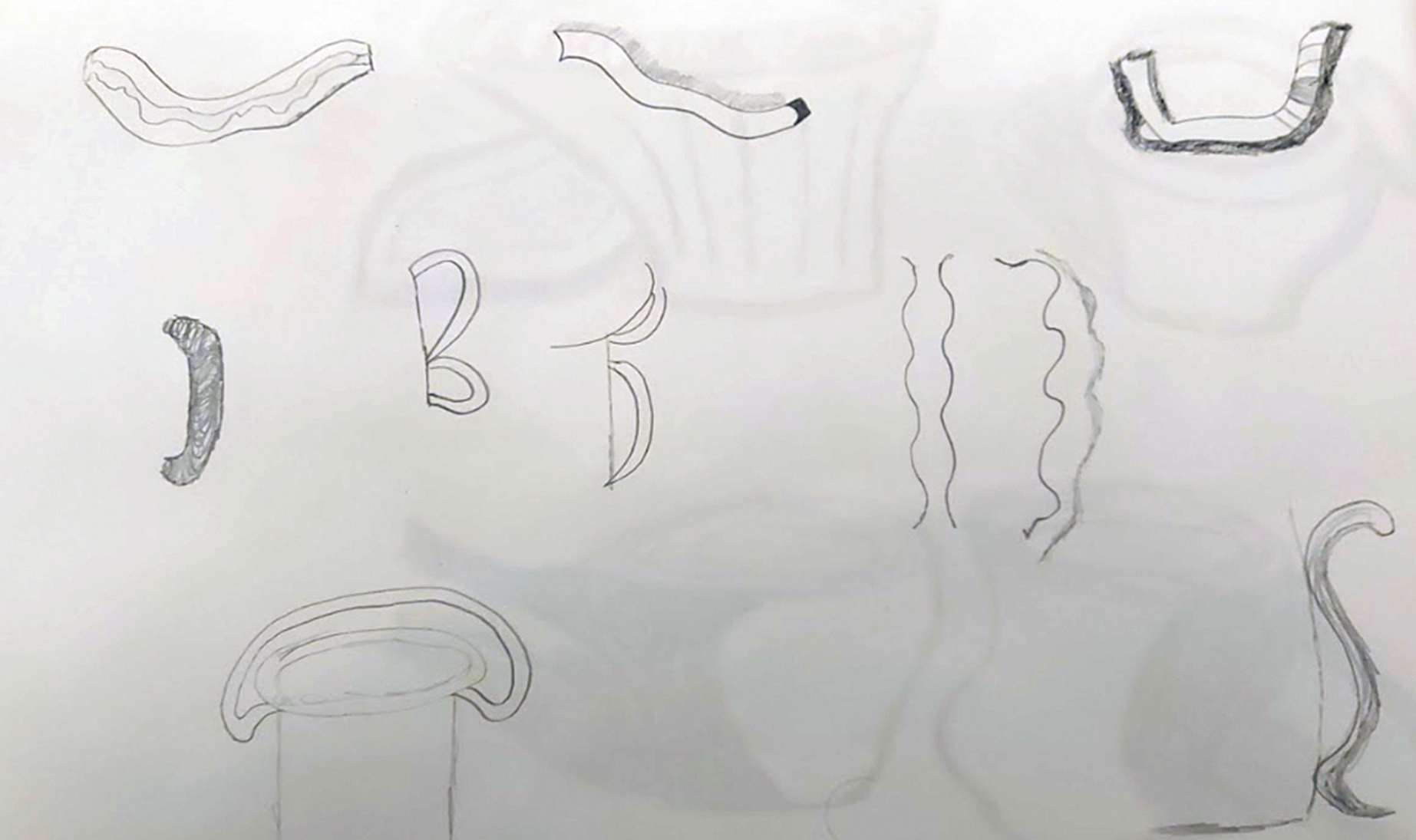
I drew some sketches of handles to think about what handles could be used on my work as well as shape, I then took some of these thoughts on design into my material samples.
Below are some of the models of ceramic handles that I made in the workshop. I wanted to look at the different curves and I was inspired by the different photos of greek ceramics that I had seen during my research. Especially the horizontal and curved handles on kylixes and kraters.




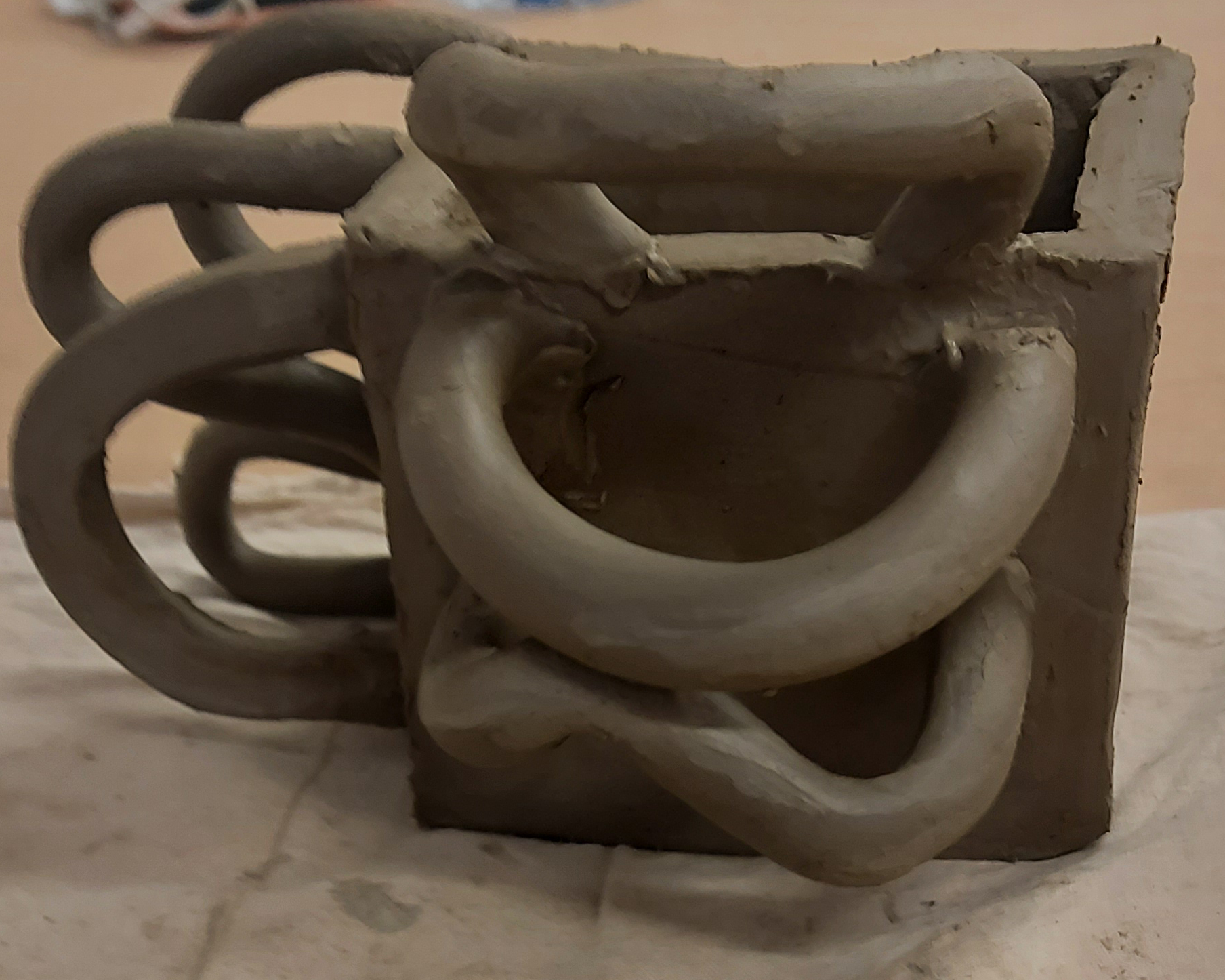
Websites I've used for this section
https://www.dezeen.com/2010/11/23/blaue-blume-by-undergrowth-design/
https://www.dezeen.com/2014/12/03/rene-siebum-tactile-door-handles-touch-study-dutch-design-week/
https://www.designboom.com/design/danish-crafts-extraordinarycraft-collection/
Photos I've used for this sections
https://www.dezeen.com/2010/11/23/blaue-blume-by-undergrowth-design/
https://www.dezeen.com/2014/12/03/rene-siebum-tactile-door-handles-touch-study-dutch-design-week/
https://www.designboom.com/design/danish-crafts-extraordinarycraft-collection/
Researching Forms of Different Cups
I then decided to look at forms of cups or different drinking vessels in a modern context, some that are inspired by historical vessels of significance such as these drinking vessels designed by Frida Escobedo. These vessels are carved out of stone and their colours are inspired by the Mexican landscape. Their form was also influenced from a traditional drinking vessel called a jícara which was used pre 16th century as a cup for the Aztec empire's organisation. Jícaras are traditionally made from fruit shells from calabash trees.
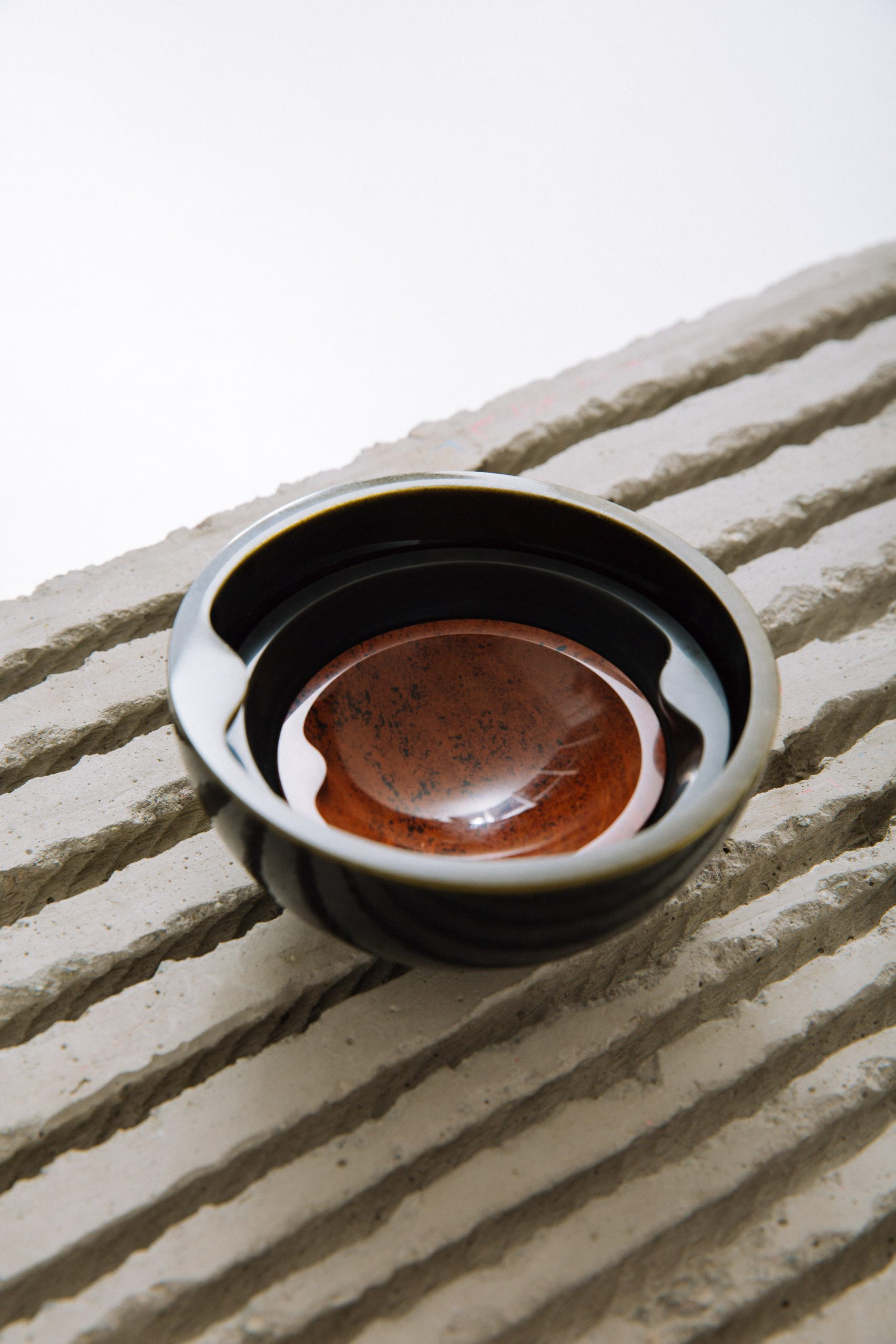
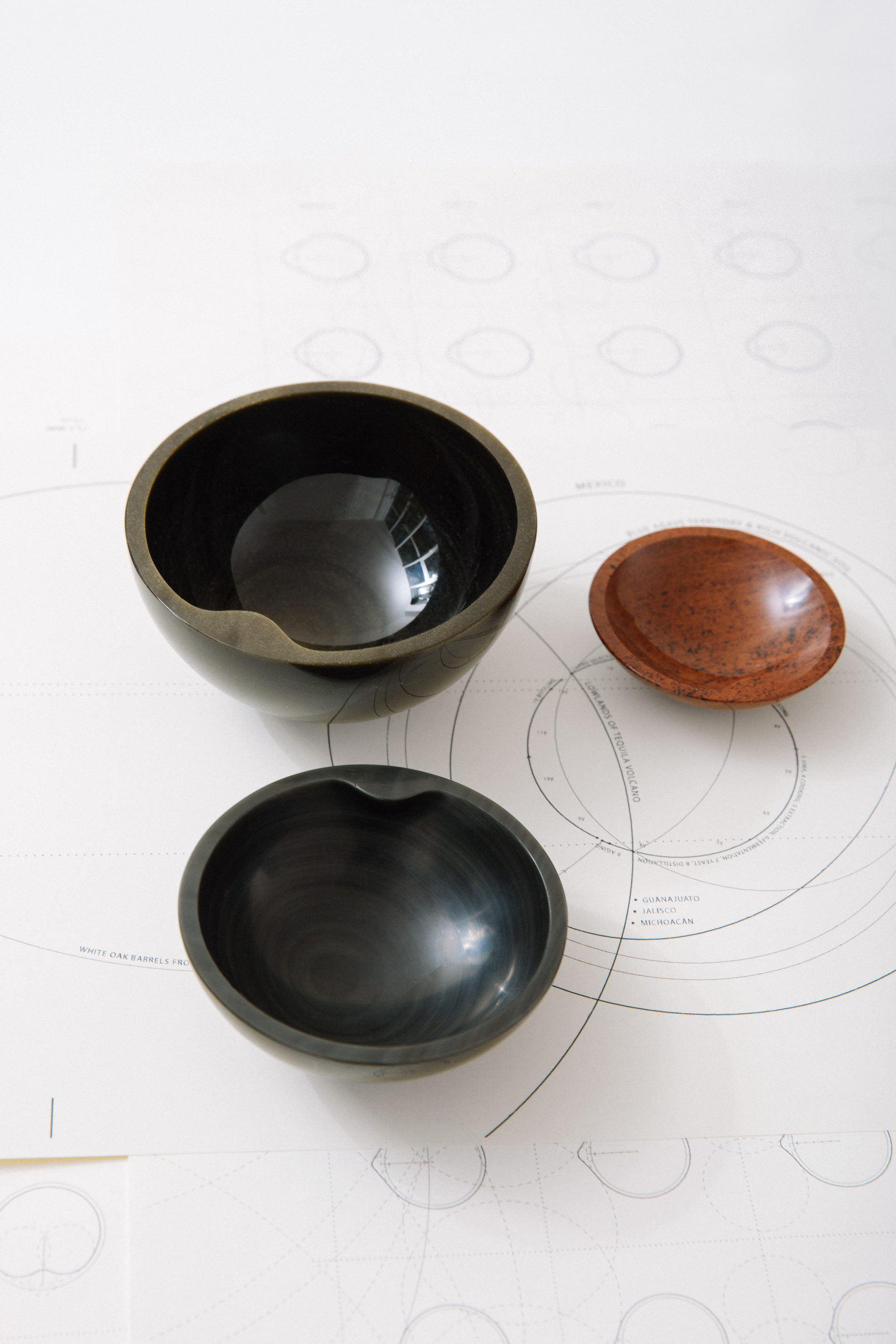

In this tea set by Annemette Kisssow and Vipp (homeware retailer). The form of the cups are two tiered and there seems to be theme of two - with the plater being two circles next to each other. The egg cup was the most interesting because it took away the cup part of the egg cup and made it into an egg ring. I think the larger top o on the cups and bowls allow for easy hold. These pieces are minimalist and doesn't allow handles to be on any of the jugs or mugs - does minimalism sacrifice functionality?
I wanted to not only look at mugs and cups but also look at other types of vessels like egg cups.This egg cup is inspired by the mörbius strip line used in conveyer belts to allow equal use of wear. This egg cup not only holds the egg but there are also other curves which can be used to hold eggs shell or the spoon. This approach to making an egg cup I feel is very interesting and maybe using paper for modelling could be a potential technique to use when I'm thinking about form.


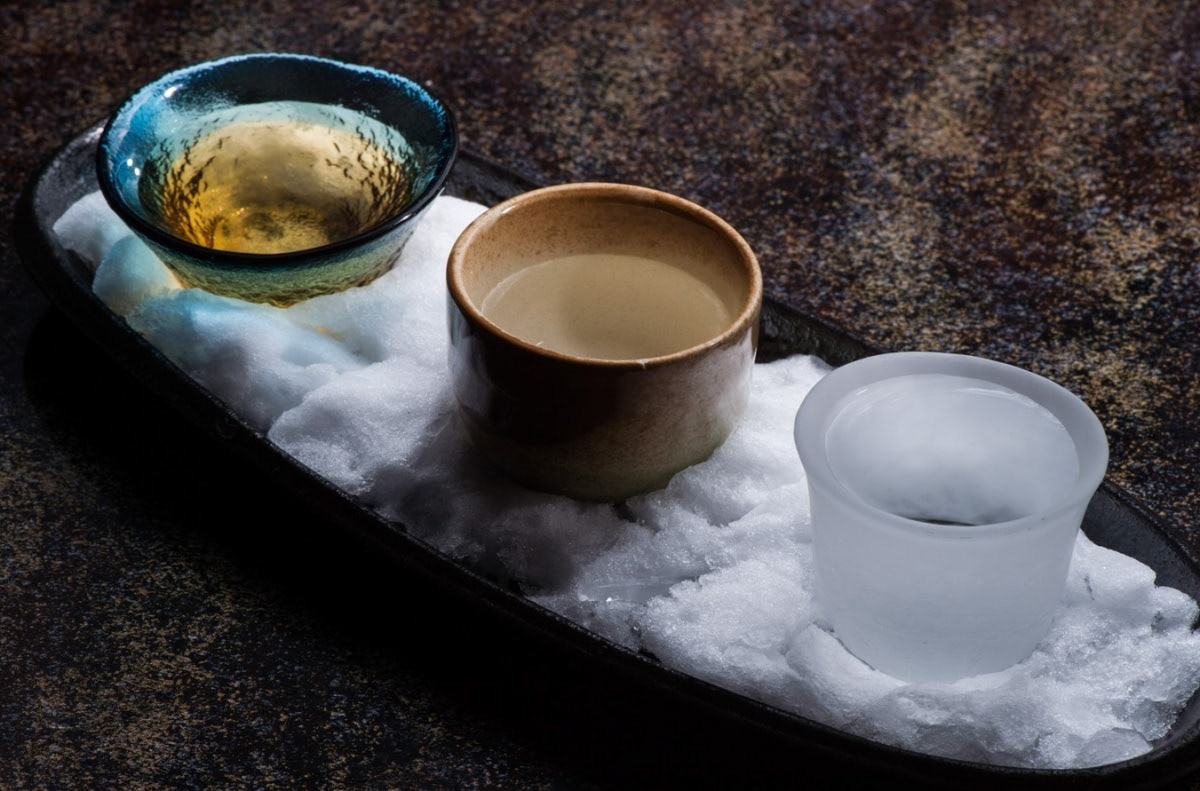
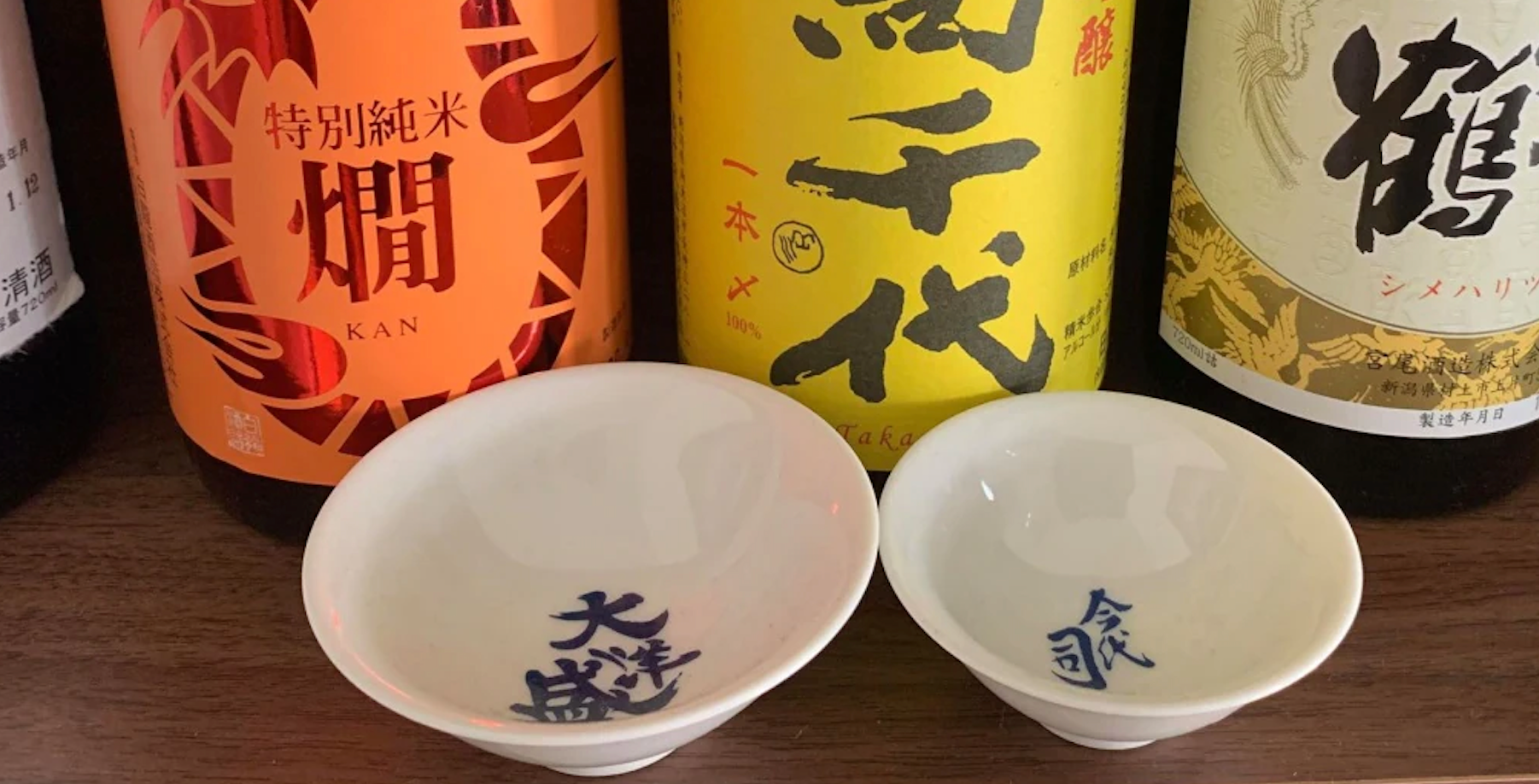
I also looked into traditional sake cups called ochoko. These small cups hold around 45ml of sake and are normally used in Japanese restaurants. Some larger ones are also available to hold larger amounts of sake. These forms are quite circular but can differ in terms of material or decoration. These ochoko shown above show a mix of glass and ceramic as well as some curved out tops of the cups. These wider and flatter cups below are called hirahai and are flatter and wider to allow the flavour of the sake to be more noticeable. The smaller volume of the cup also means its good for taste testing.
Researching Different Ceramic Forms
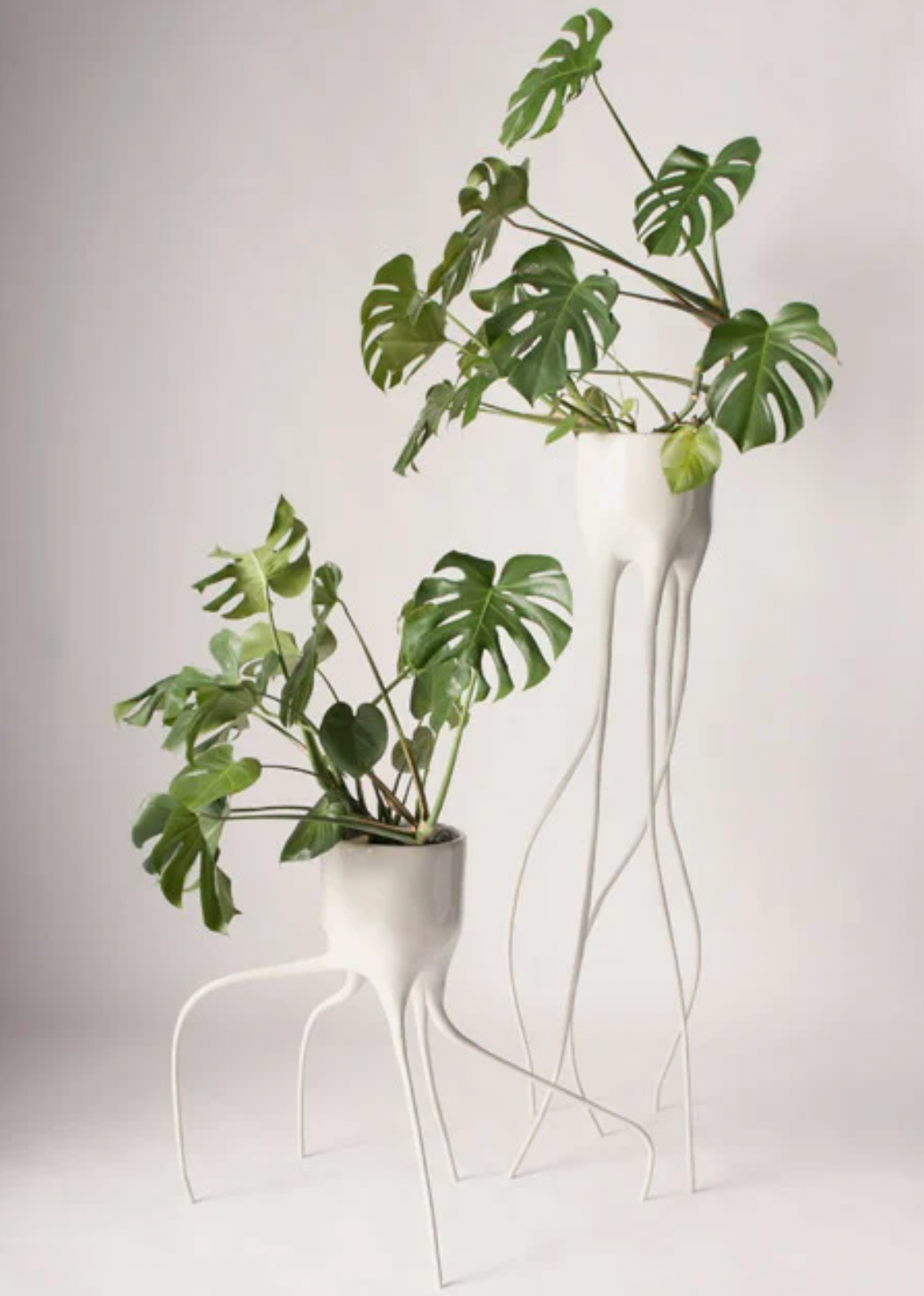
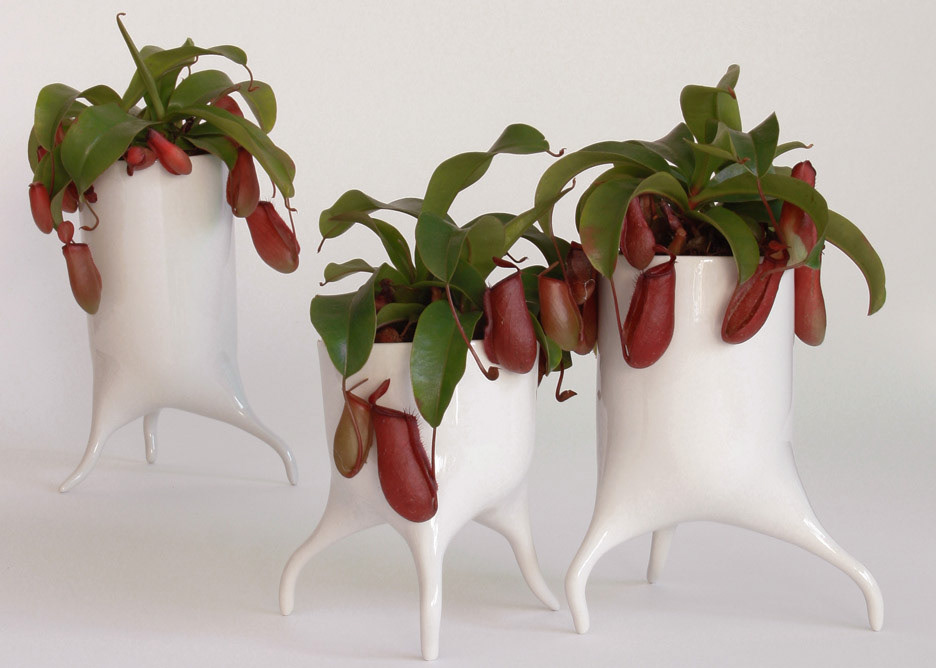
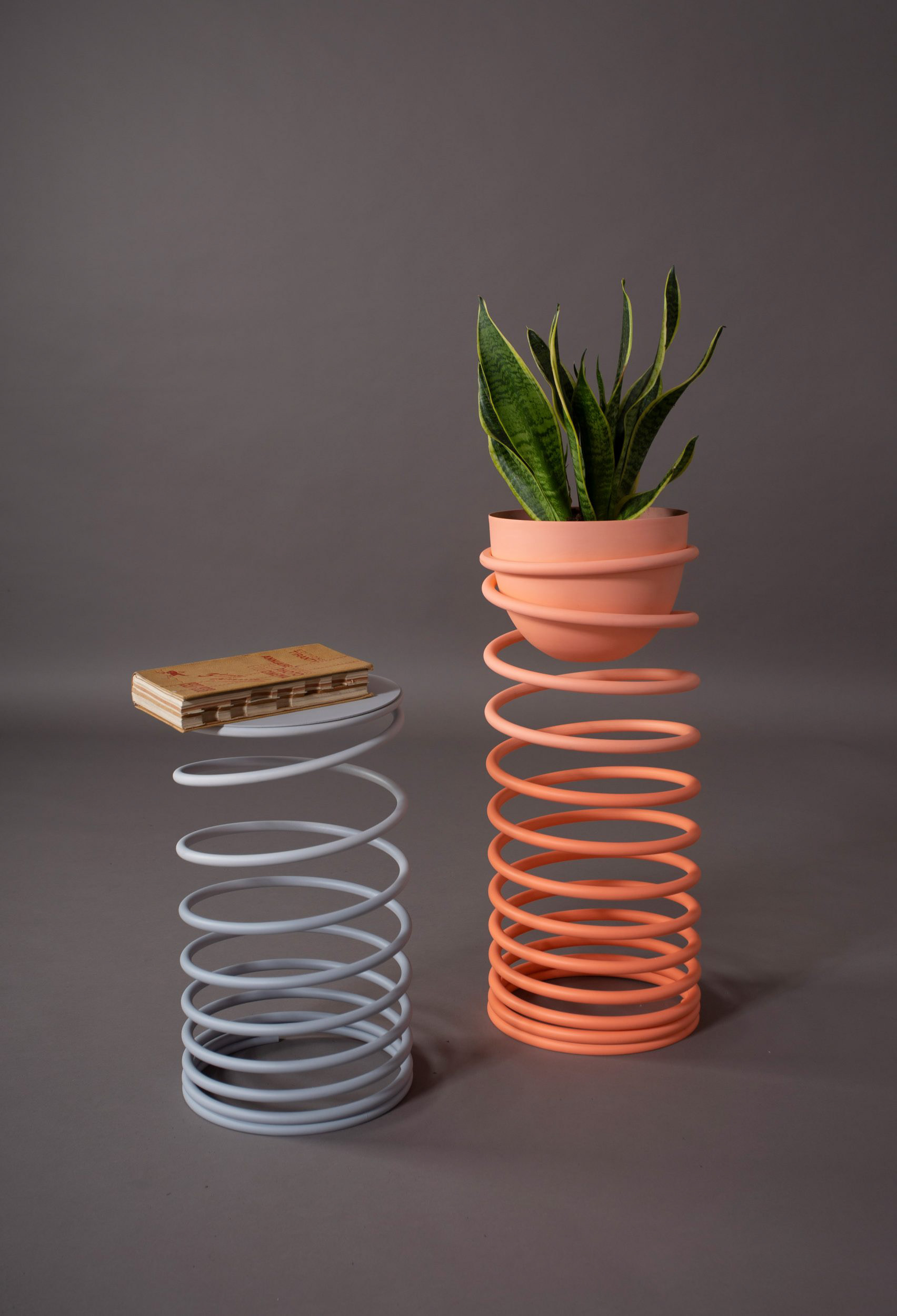
I didn't want to just look at cups as there are lots of other types of containers and I wanted to widen my research - this is why I looked at plant pots. These plant pots by Tim van de Weerd (top) are meant to not only be an extension of the plants through their thin stems at the bottom of the pot but the feet are curved at different angles to make it look like they are about to move away. The first pieces with the longer legs had steel inside in order for the plant pot to be able to prop up. These second forms are so uniform at the top and then the bottom is moulded to accommodate the root like feet at the bottom of the piece. When thinking about my designs I need to think about the handle and if I would need to mould the form around the handle - could this make a completely different shape? I also found these plant pots by Andreea Cornila (bottom)that fit into a spring-like stem. This stem is able to not only hold a plant pot but a small circular top that changes the function from a plant pot holder to a small table. The idea of using random objects to inspire my design is something I want to take forward into my own practice and hopefully within this project. I was also interested in the two different functions that the spring could give - this idea maybe something that I could further research or use within my design into but I don't think it is a priority.
These vases by Fung Kwok Pan take imperfections and use them as part of the aesthetic. A digitally modified antique vase is wax moulded to create a shell and this is then cast in ceramic and fired with aluminium to create the metal like effect. I really like how the designer has brought together these vases in the picture shown and it creates a collective piece as well as them all being functional individually. I would really like to see how I could potentially use digital techniques within my work. Could ceramic printing be used as an add on to a piece that I create? This is something that I could think about when I'm modelling and designing.
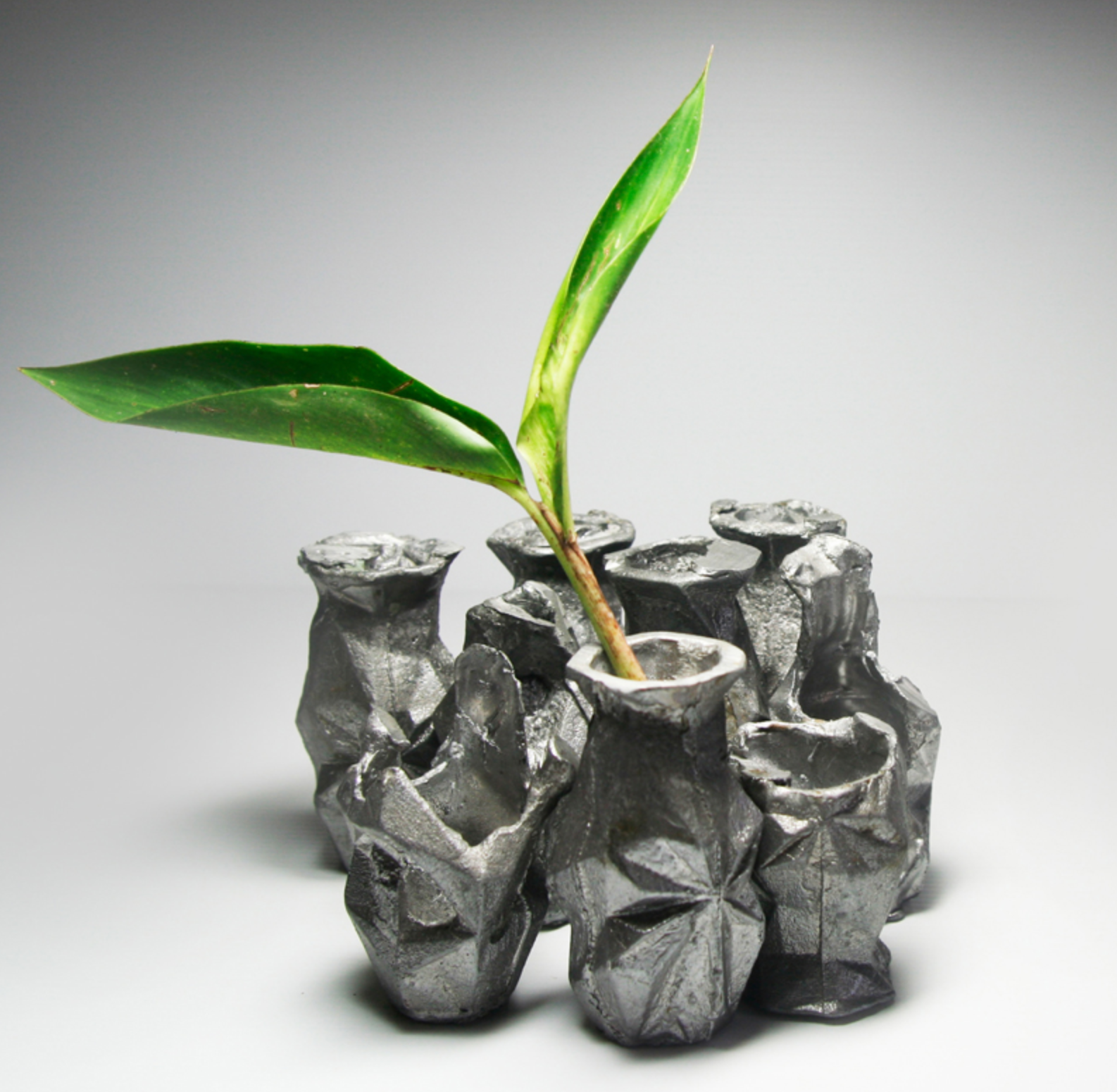
When doing research this tea set especially stuck out to me as the forms were so odd. Zhekai Zhang was able to cast these pieces using fabric and some of the sides are smoother than the other side which is 'crushed.' This inspired me to think about what else fabric can do as it is such a versatile material.

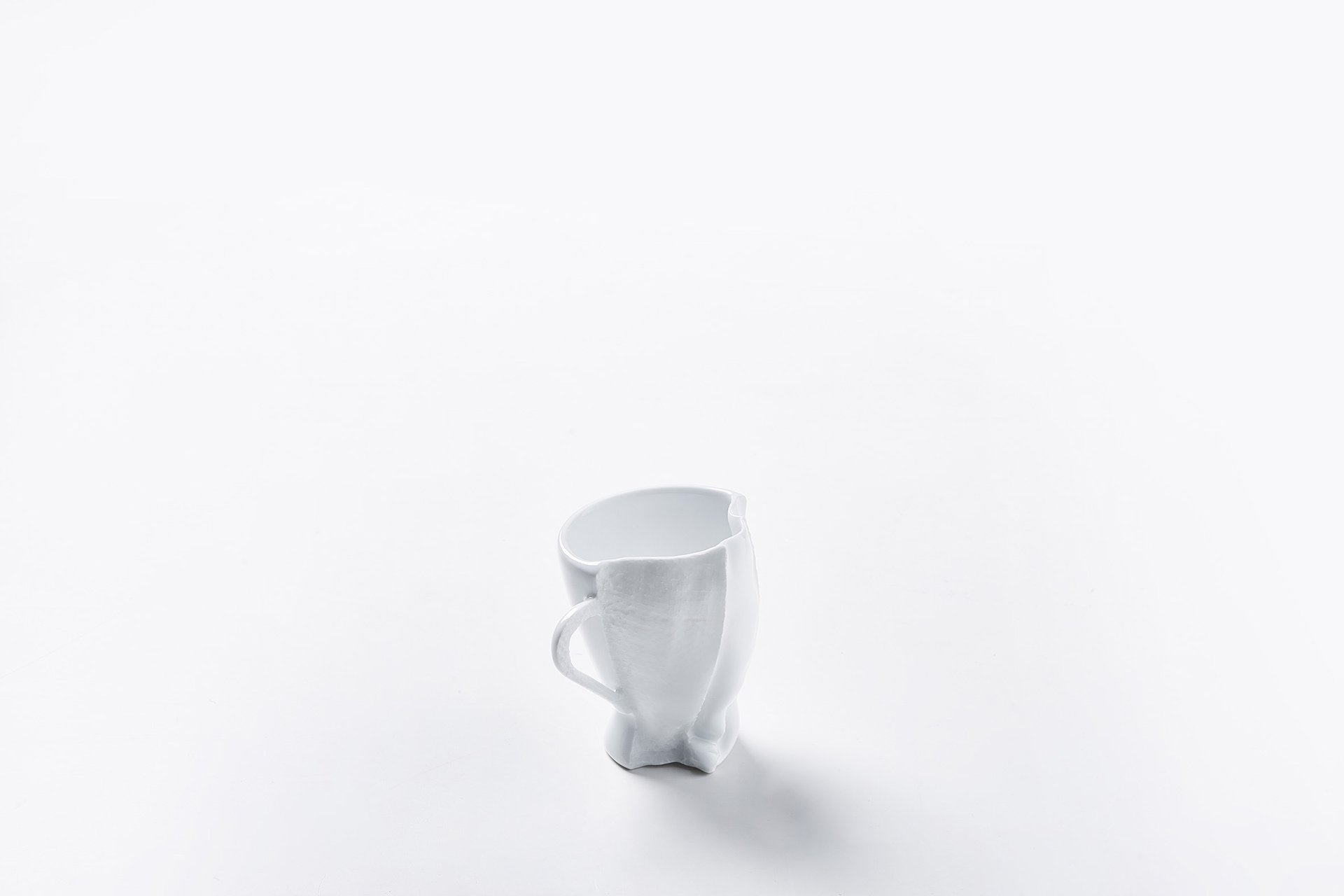
Websites I've used:
https://www.mayana.global/product/mayana-bowl-jicara/
https://www.dezeen.com/2019/03/20/frida-escobedo-drinking-vessels/
https://www.dezeen.com/2015/08/27/vipp-partners-annemette-kissow-ceramicist-launch-debut-ceramics-line/
https://www.dezeen.com/2012/09/24/aspirals-by-suzanne-trocme-for-1882-ltd/
https://www.dezeen.com/2015/12/27/tim-van-de-weerd-white-ceramic-porcelain-carnivora-plant-pots-legs/
https://www.dezeen.com/2020/06/29/andreea-cornila-design-interiors-products-vdf-studio-profiles/
https://www.designboom.com/design/fung-kwok-pan-crack-vase/
https://www.dezeen.com/2018/06/22/fabric-ceramic-tea-set-zhekai-zhangs-design/
Photos I've used
https://www.dezeen.com/2019/03/20/frida-escobedo-drinking-vessels/
https://www.dezeen.com/2015/08/27/vipp-partners-annemette-kissow-ceramicist-launch-debut-ceramics-line/
https://www.dezeen.com/2012/09/24/aspirals-by-suzanne-trocme-for-1882-ltd/
https://en.wikipedia.org/wiki/M%C3%B6bius_strip
https://www.dezeen.com/2015/12/27/tim-van-de-weerd-white-ceramic-porcelain-carnivora-plant-pots-legs/
https://www.dezeen.com/2020/06/29/andreea-cornila-design-interiors-products-vdf-studio-profiles/
https://www.designboom.com/design/fung-kwok-pan-crack-vase/
https://www.dezeen.com/2018/06/22/fabric-ceramic-tea-set-zhekai-zhangs-design/

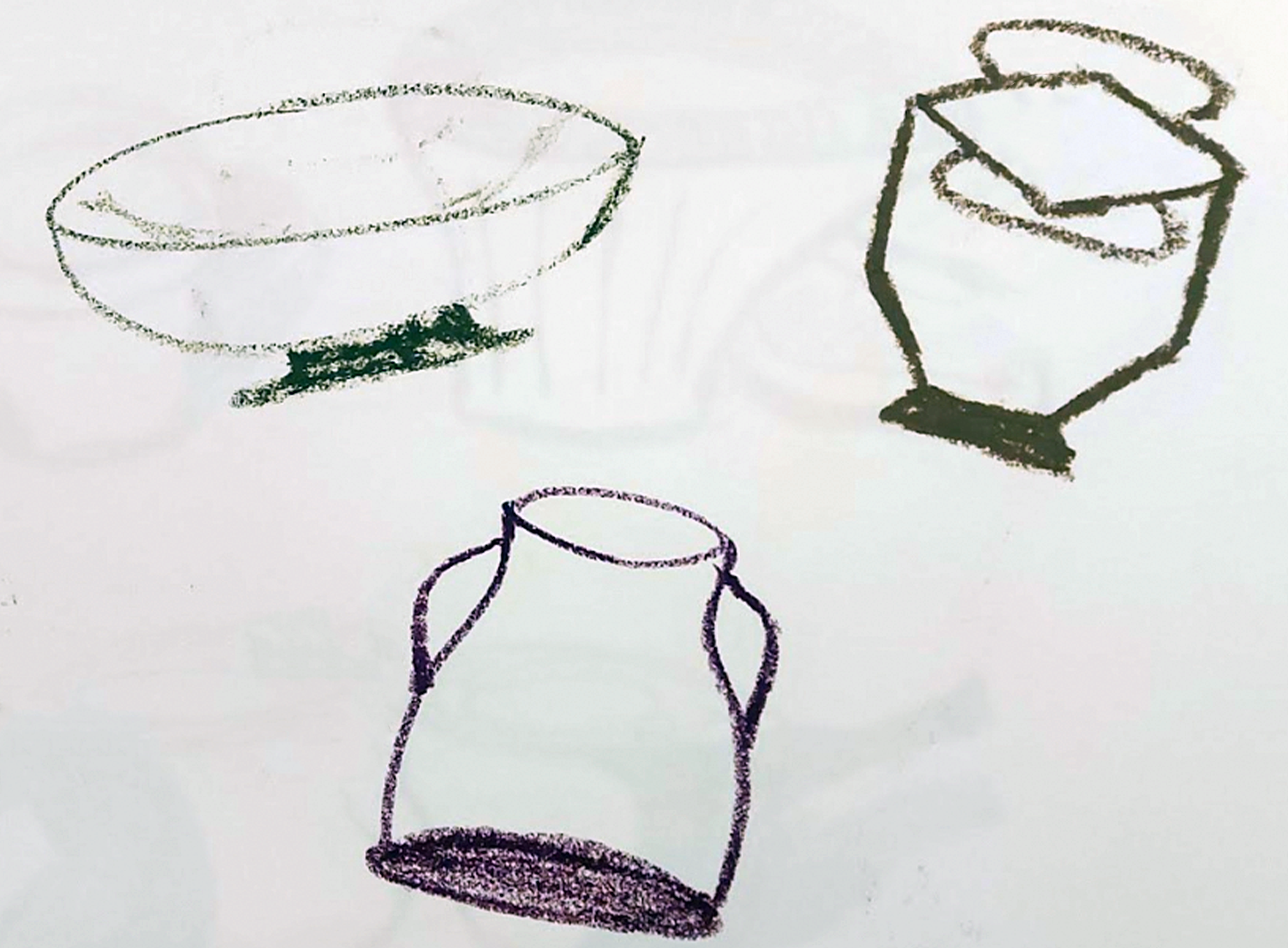
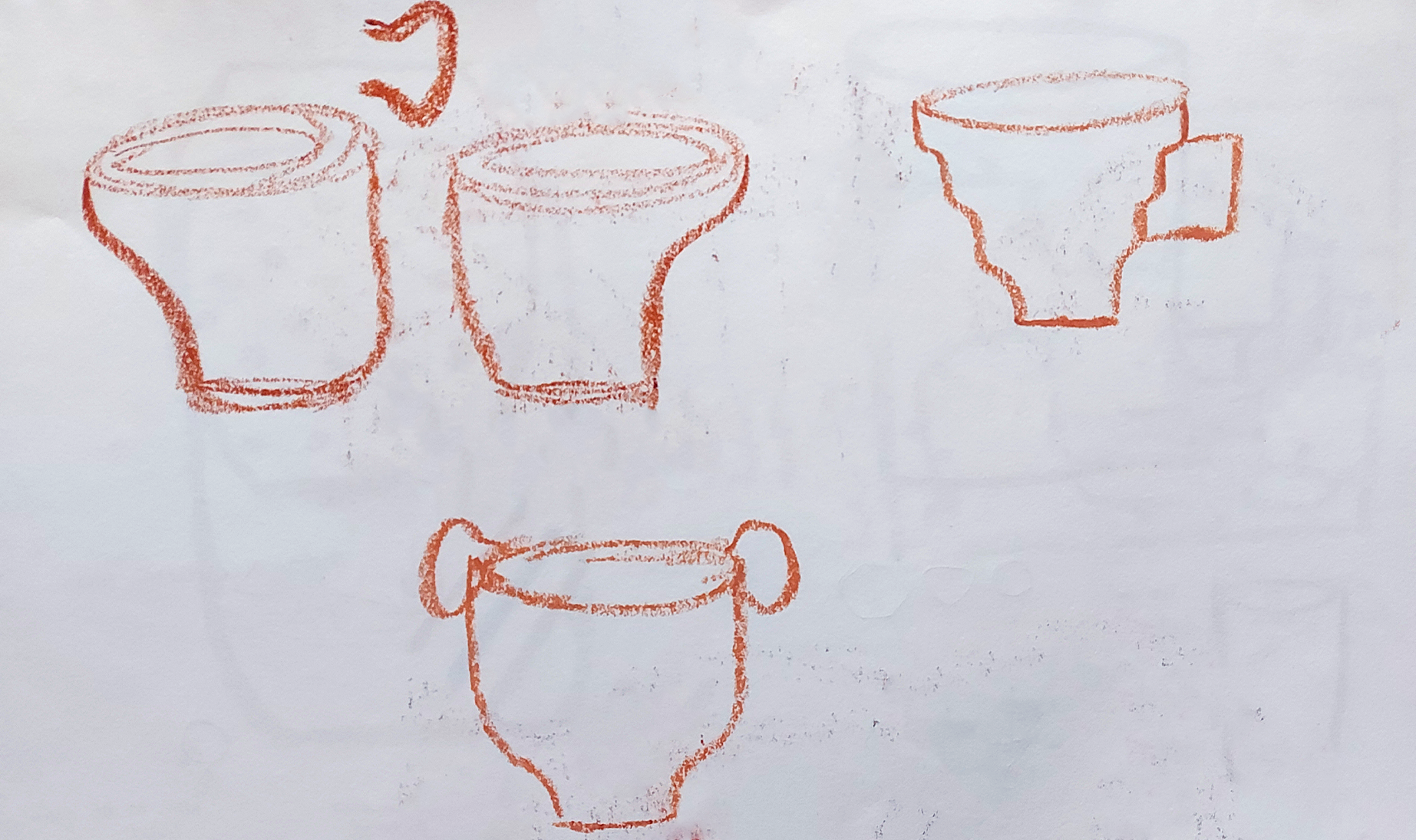
Inspired by the simpler forms I found during my research, I sketched out different forms - some curved and some with straight edges. Doing these sketches made me think about handle placement and how I could take these forms further which led to texture research.
Experimenting with Fabric
Inspired by this use of fabric by Zhekai Zhang that was used to cast his ceramics, I decided to put fabric into different forms and see what different shapes I could make out of it. I wanted to see how the manipulation of the fabric using pins and thread can change the way that the fabric curves and wanted to see how I could translate this into clay. As the fabric is so versatile I wanted to see how these naturally formed curves could be used in a pot as curves and bulbous forms are so common in Ancient Greek ceramics.
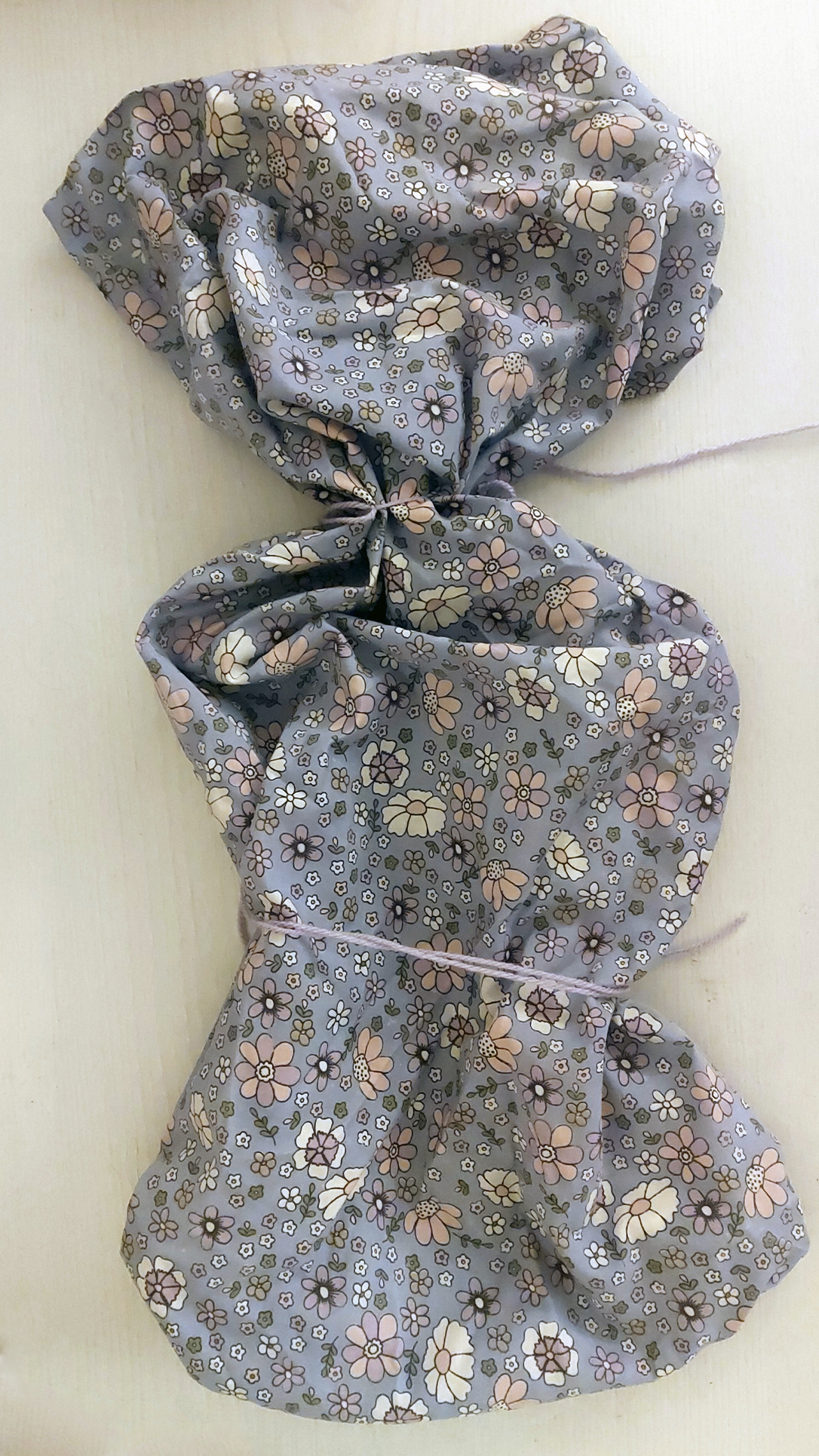

I started working with the fabric laying it on a flat surface. The thread I used manipulated the fabric into curved, seeing the different ways the fabric curved around the thread and how a rectangular piece of fabric could be manipulated into something more. I really liked the small knots that I made in four corners of the model and seeing how the material pinched into these corners.
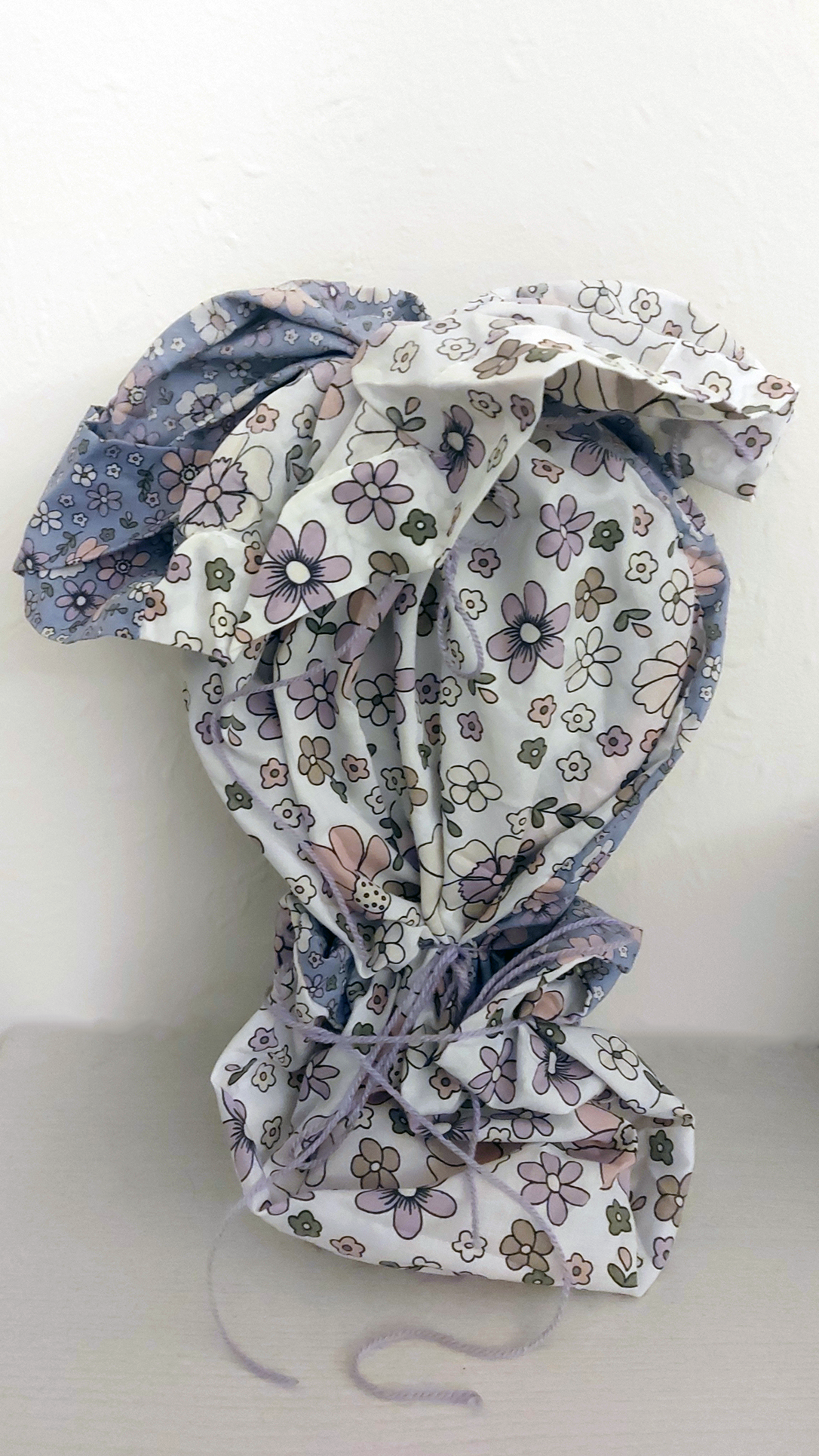
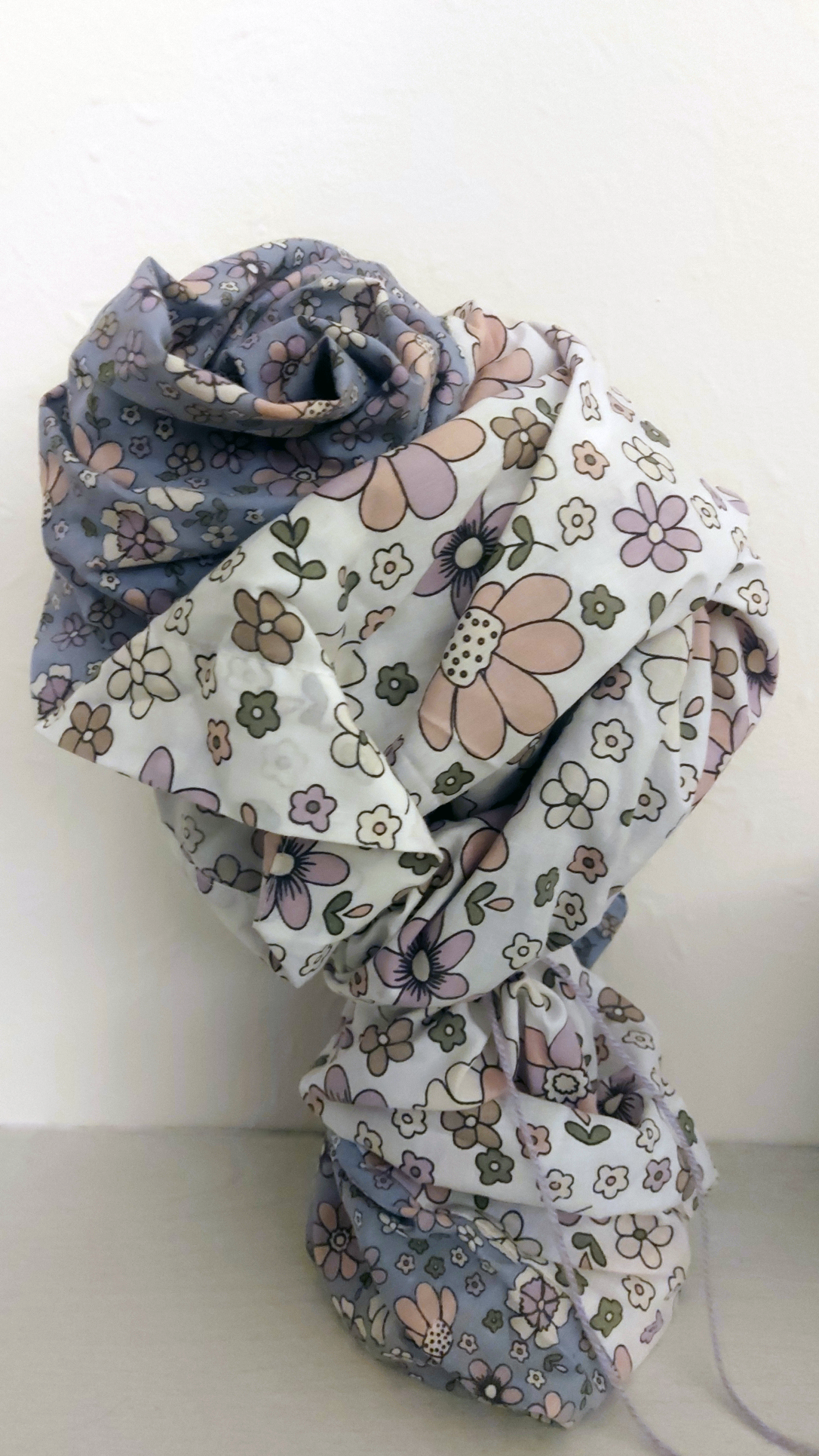
I then put the fabric over a circular table mirror, this allowed me to have a fabric model standing up and I was able to curve the fabric around a circular form, creating a more Ancient Greek like form. I really liked how in the model on the right, the fabric all went towards one point and created these creases going in one direction within the model.
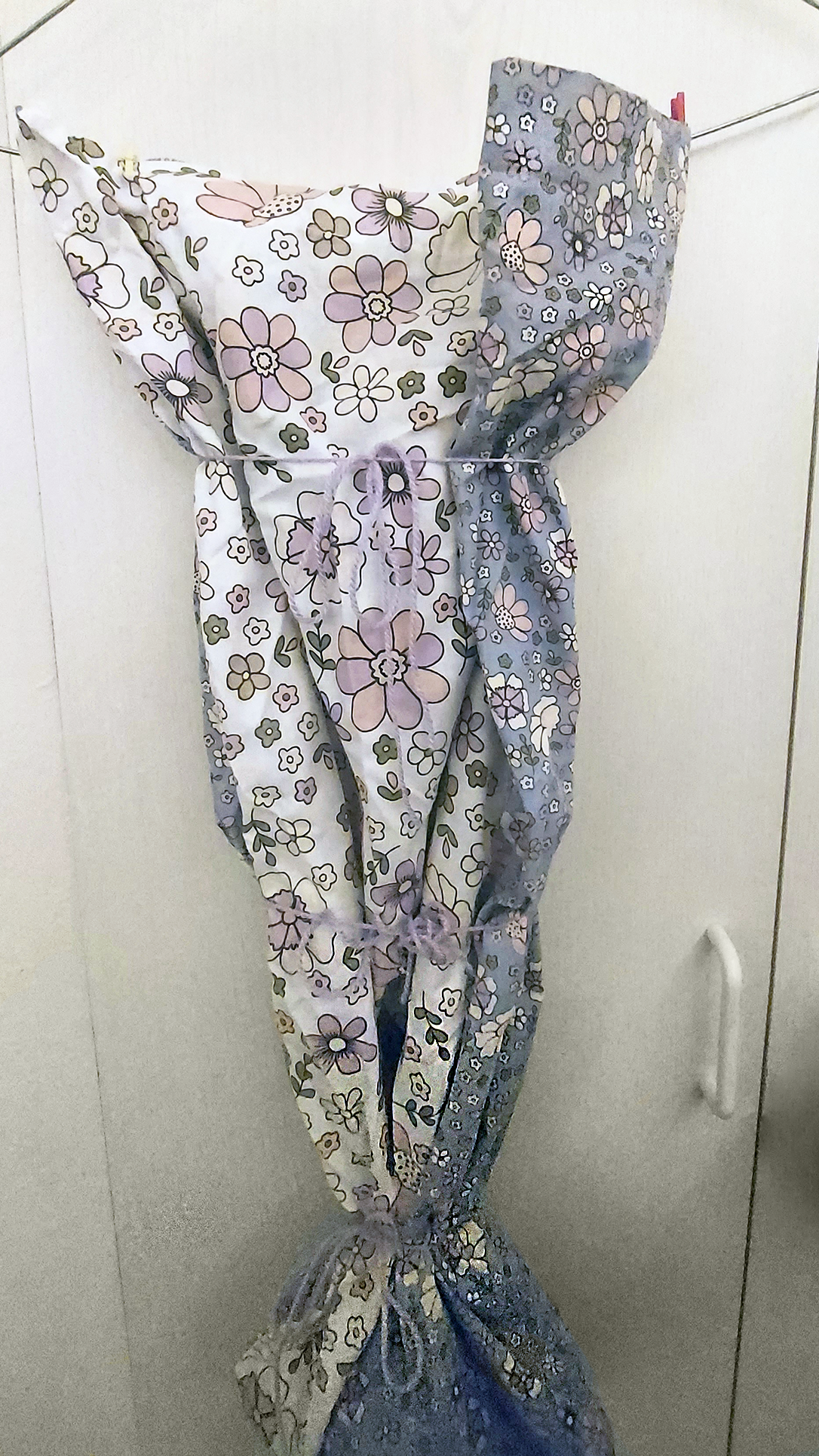

These fabric models were hung up using a hanger and pegs to see a vertical model in mid air and seeing how this affected the curves within the fabric. I didn't like these models as much as the other ones I had made as these seemed a lot more linear and they didn't seem as curved which was the type of form I wanted to apply to my final outcomes.

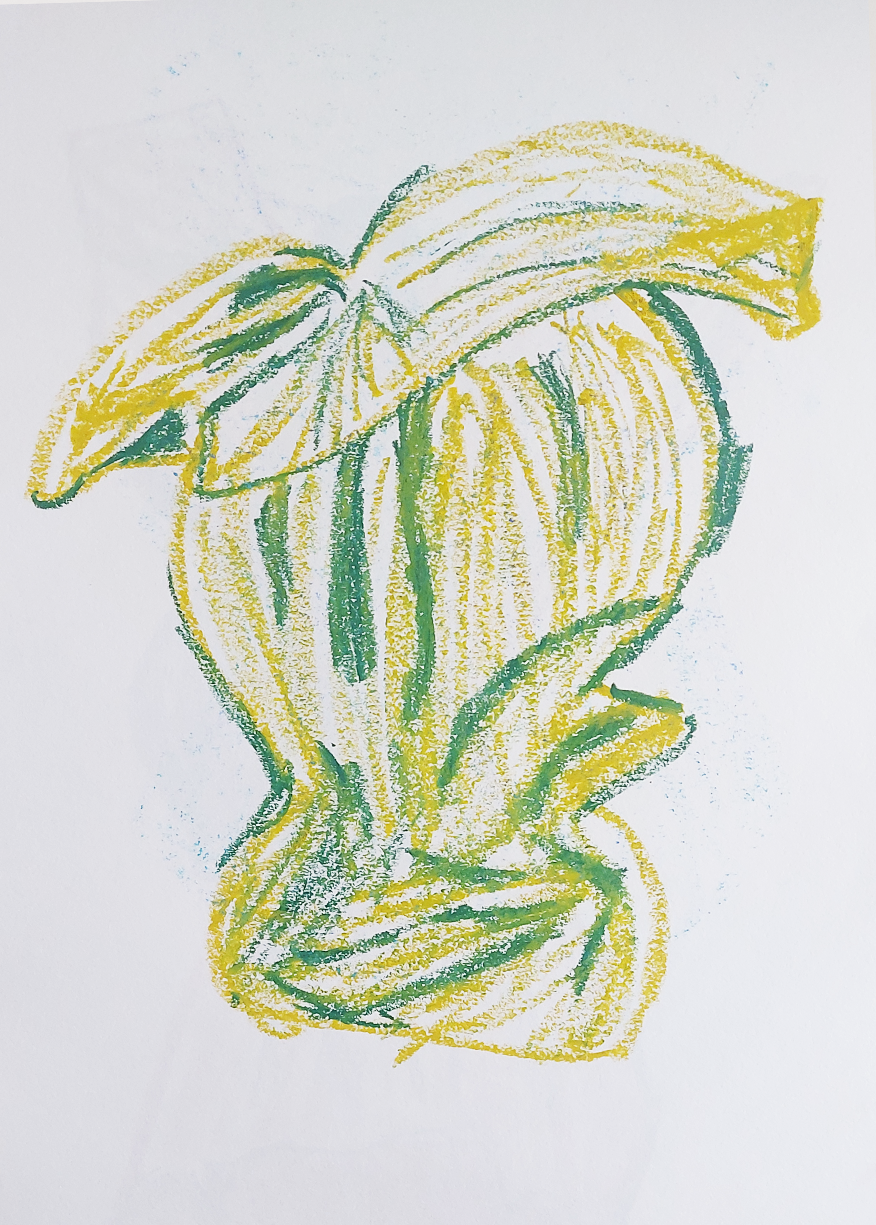
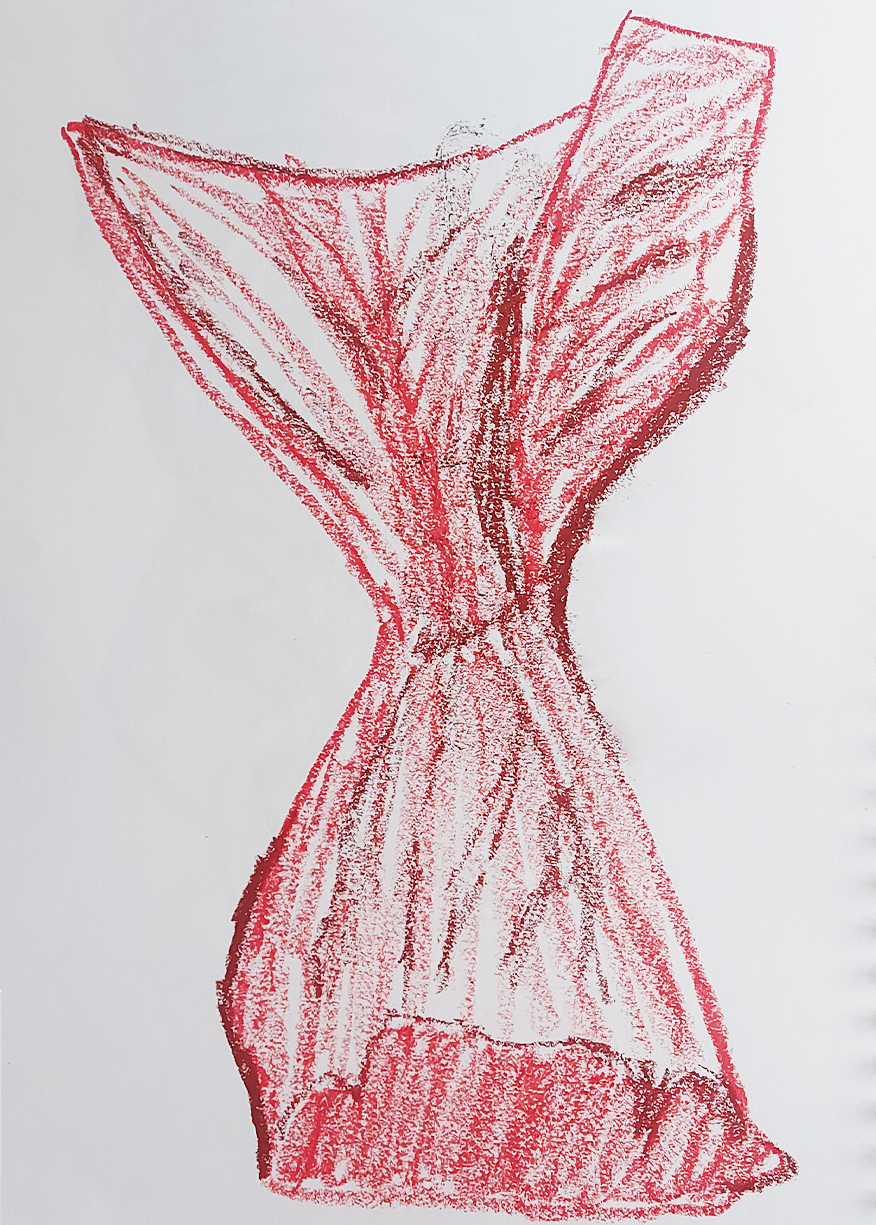
Above are the sketches I drew of the fabric models.
Fabric Experimentation into Digital Modelling
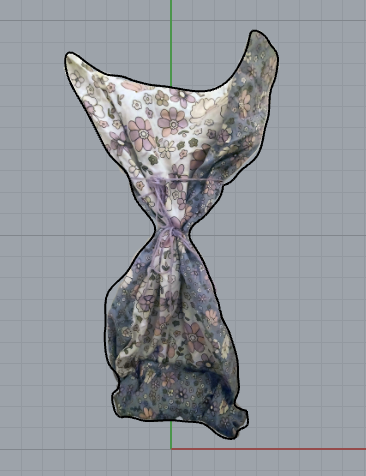
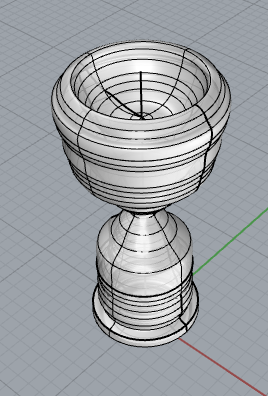

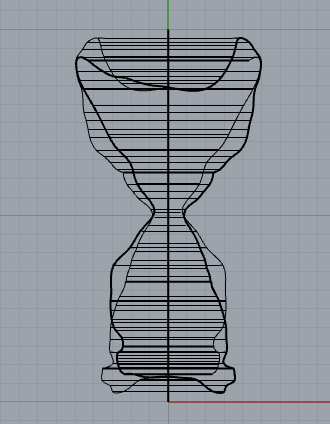
I 'cut out' pictures of the fabric that I had modelled and input these into Rhino, a digital modelling software that I had been using in my Digital Ceramics class this term. I wanted to see what these curved pieces looked like when turned into 3D models digitally.

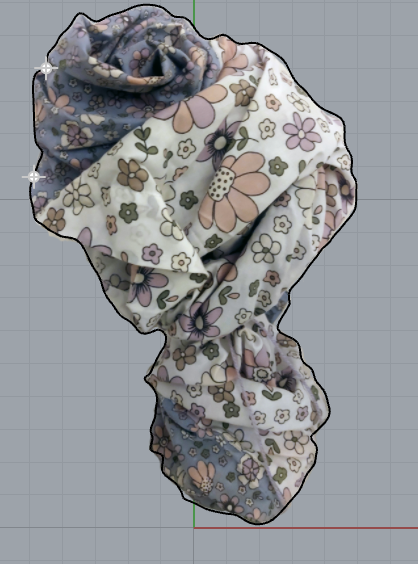
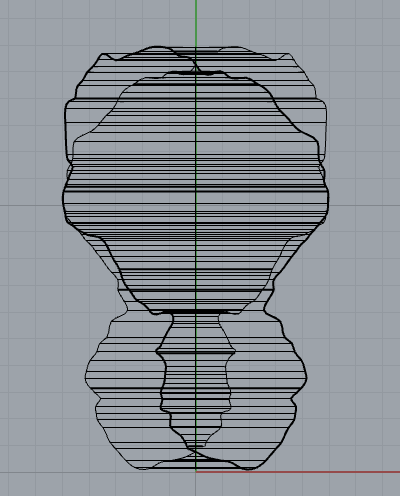
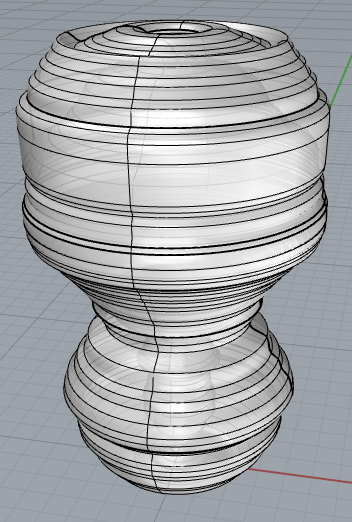
Using the Revolve function in the software, I sketched around the photos and revolved this shape to see what the 3D version looks like. I found that that the software layered the different iterations of the sketches on top of each other and to create a shape that was slightly different to the sketch to make it completely symmetrical. I thought this was really interesting to see in the wireframe mode of the software compared to the ghosted mode (last photo).


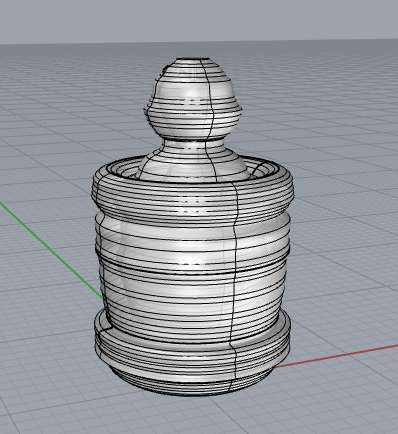
Although I found these digital forms really interesting to make, I feel like in order to create pieces inspired by fabric as well as Ancient Greek ceramics I want to explore texture as well as form and will do this through material experimentation using clay and engraving tools and use this to further inspire my final outcomes.
Primary Research
I visited the Victoria and Albert Museum to look at the wide range of ceramics they have. This piece on the left is an engraved boars head with a handle that I had seen earlier on within my Greek ceramic research. Although I like the the slightly concave shape I feel like the rounded handle is better suited for jugs, vases, and horizontal handles.

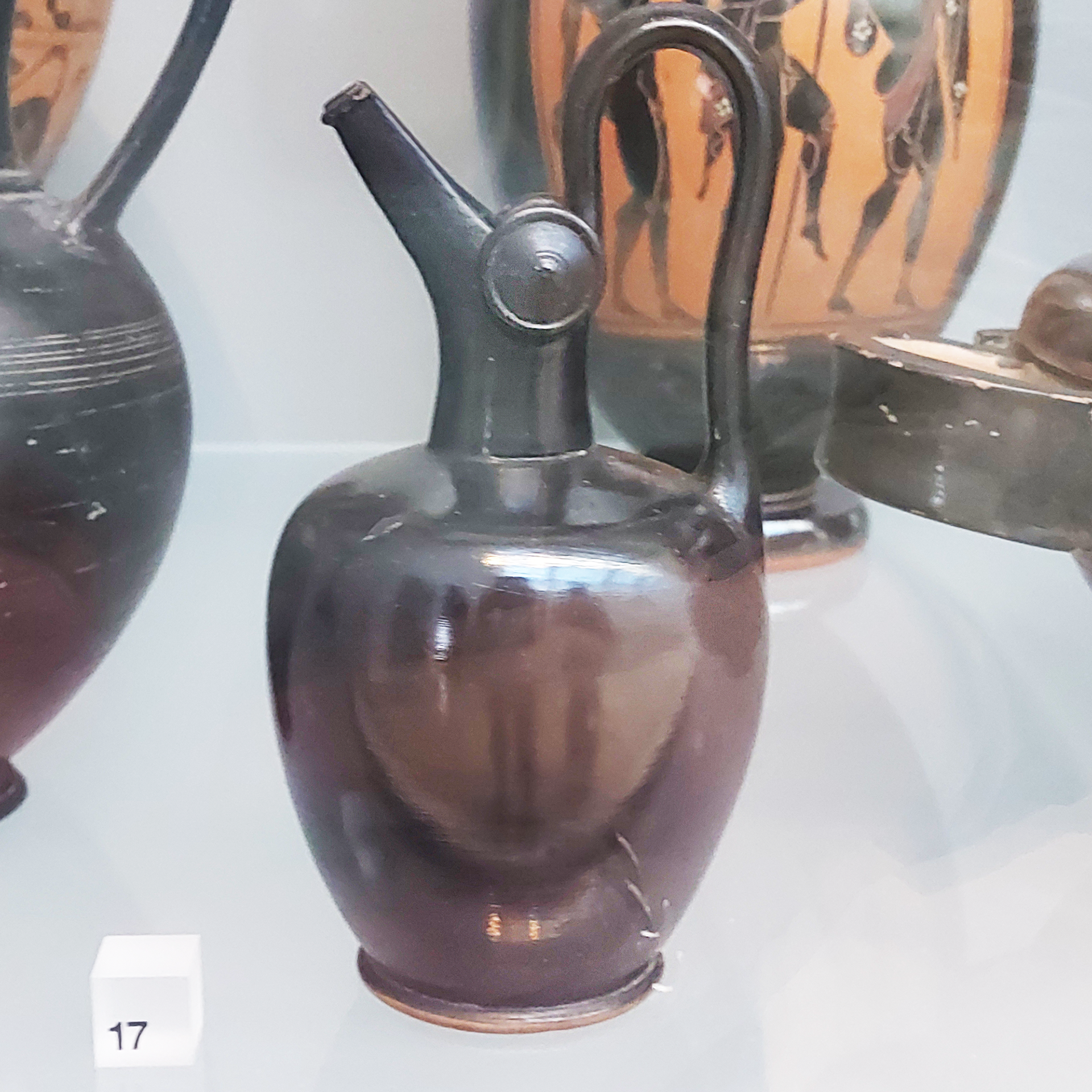
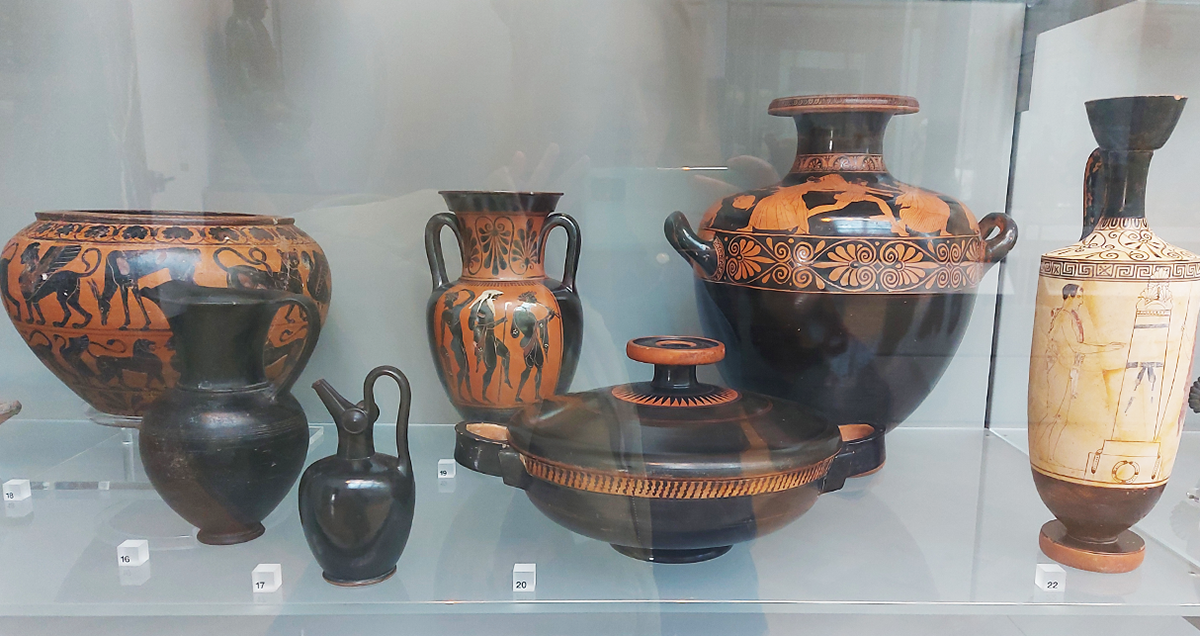
The colours that I'm seeing mainly within these Greek ceramics is orange/red and black. I like the black glazed pieces more as they have a really nice shine that reflects the light well. This is making me think about my final outcomes and what colour I want the final piece to be. Due to my interest in the black and wanting to see a more reflective glaze used on a piece that is inspired by fabric, I am going to have a black glaze on my final outcomes.
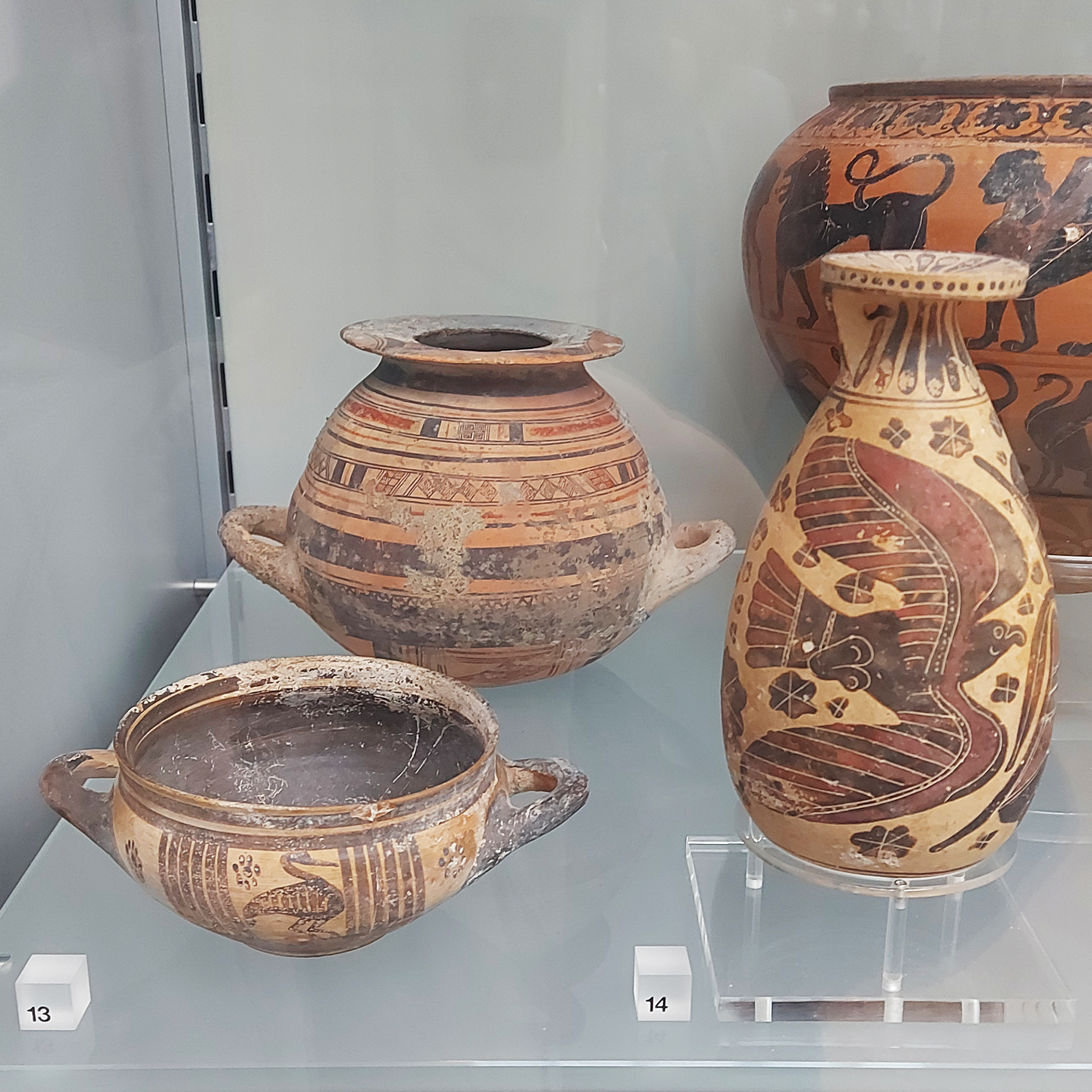

These pieces above seem to be more damaged and not as shiny due to glaze and smoking techniques not being used for these pieces. The oil bottle with the eagle design (14) is slightly wonky and I like how its not completely symmetrical - making it a bit different. Due to my final outcomes being inspired by fabric - and not being symmetrical like the majority of Ancient Greek ceramics - I am really interested in this curved bottle and maybe this was done purposely for it to be easier to pour the oil.

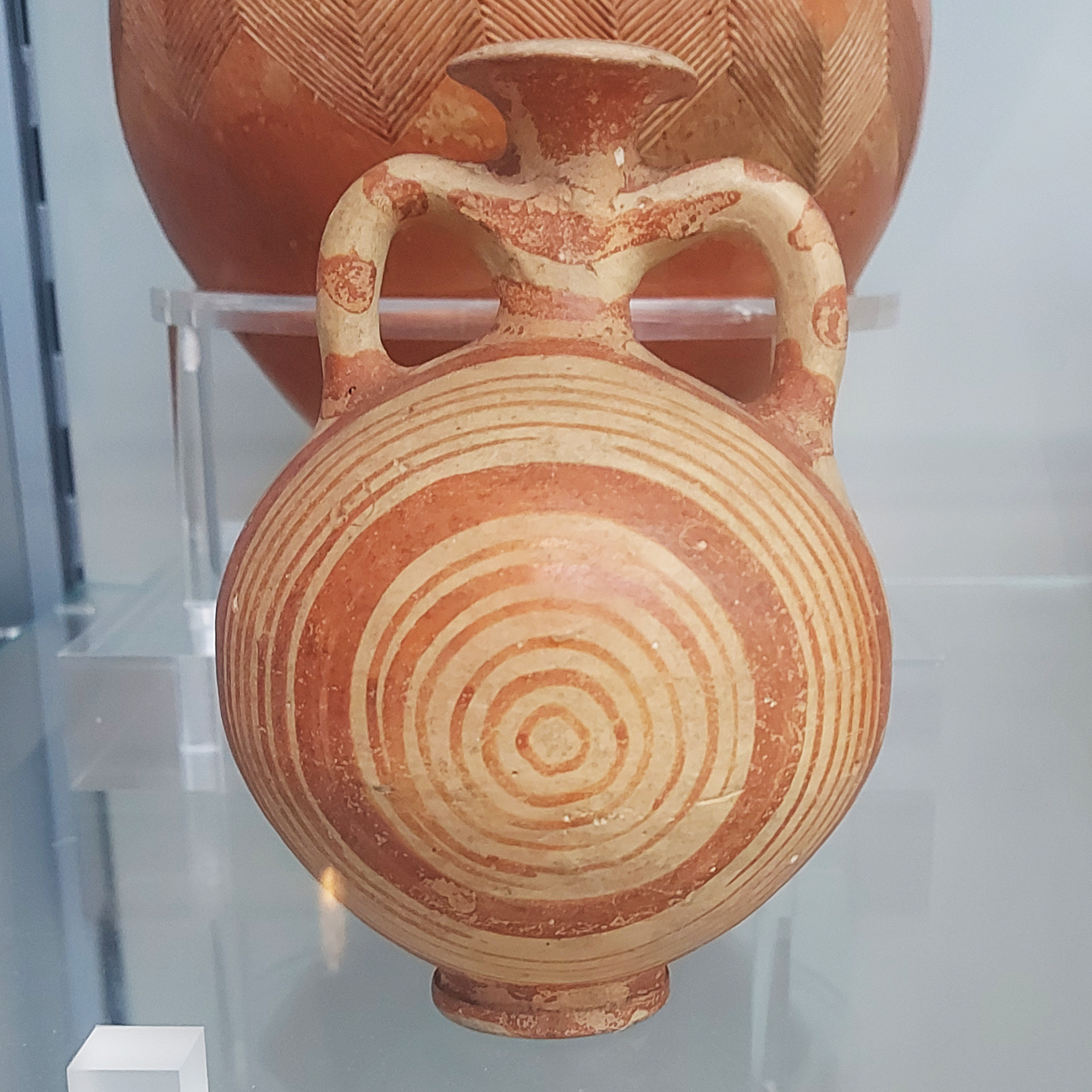
These pieces uses a lot of circles within its form and decoration. I really like the forms of these pieces and the way the handles connect them. I am also interested by the difference in base of each piece. The base of the piece on the right has a lipped base which I think would be great when coiling as the base can sometimes break and an extra base might be useful to have when I'm connecting the clay to the coils.

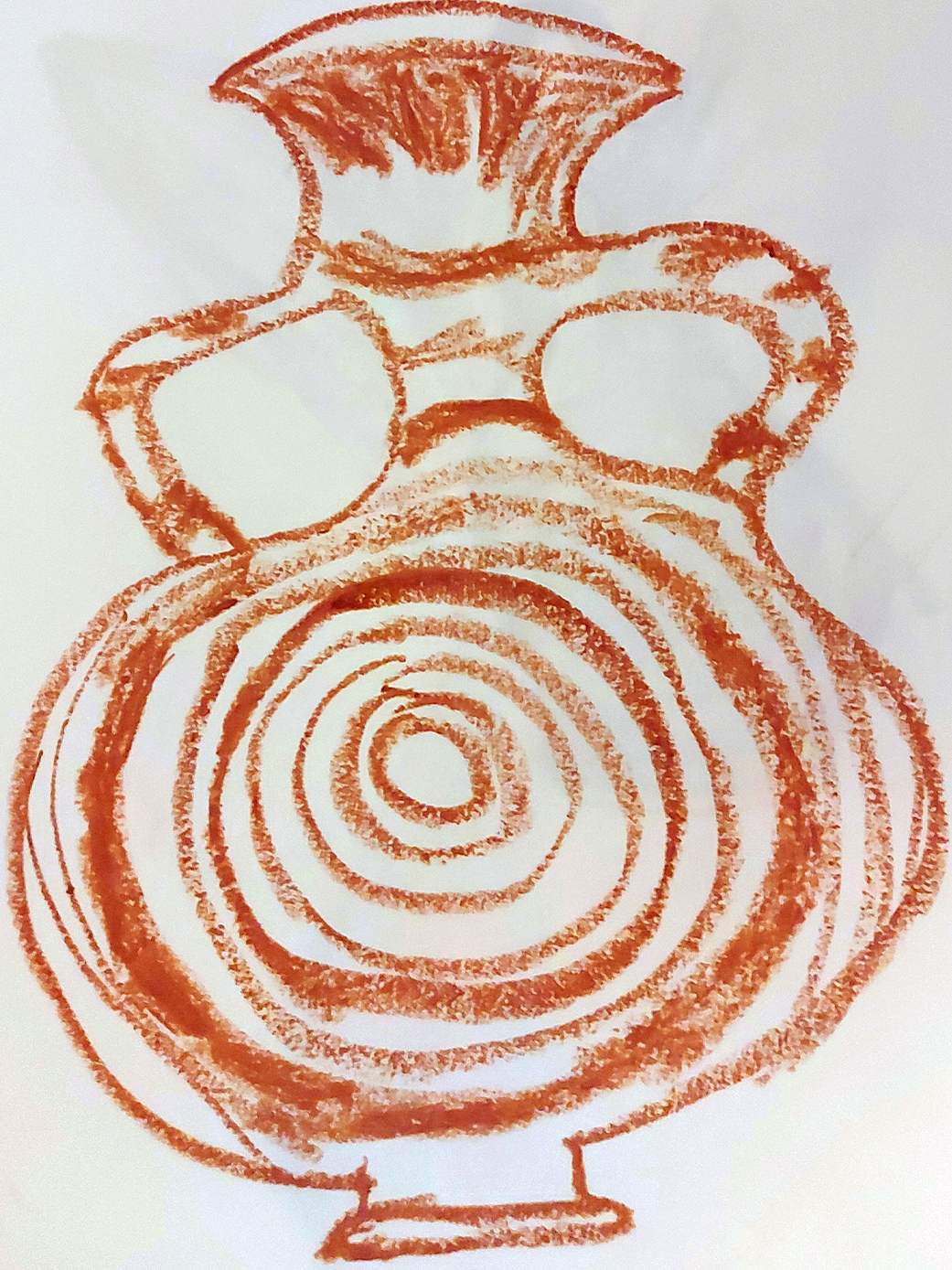
Above are sketches of Ancient Greek ceramic primary research I conducted.
Fabric Inspired Material Samples
Inspired by my fabric experimentation, I then went on to create different fabric textures within clay. I used Almington clay as that was what I had been making my previous material samples out of and I enjoyed using that texture of clay.
The first two samples that I made were using clay that I had wedged and using engraving tools to create different pieces. Samples 1,2 and 4 were made using wet clay and tended to be more smooth due to how easy it was to carve the clay. Sample 2 was the most difficult out of the three to make as the different folds were hard to shape without small flecks of clay sticking to the clay, making it difficult to create a smooth texture which is what I wanted for my final piece as fabric is smooth.
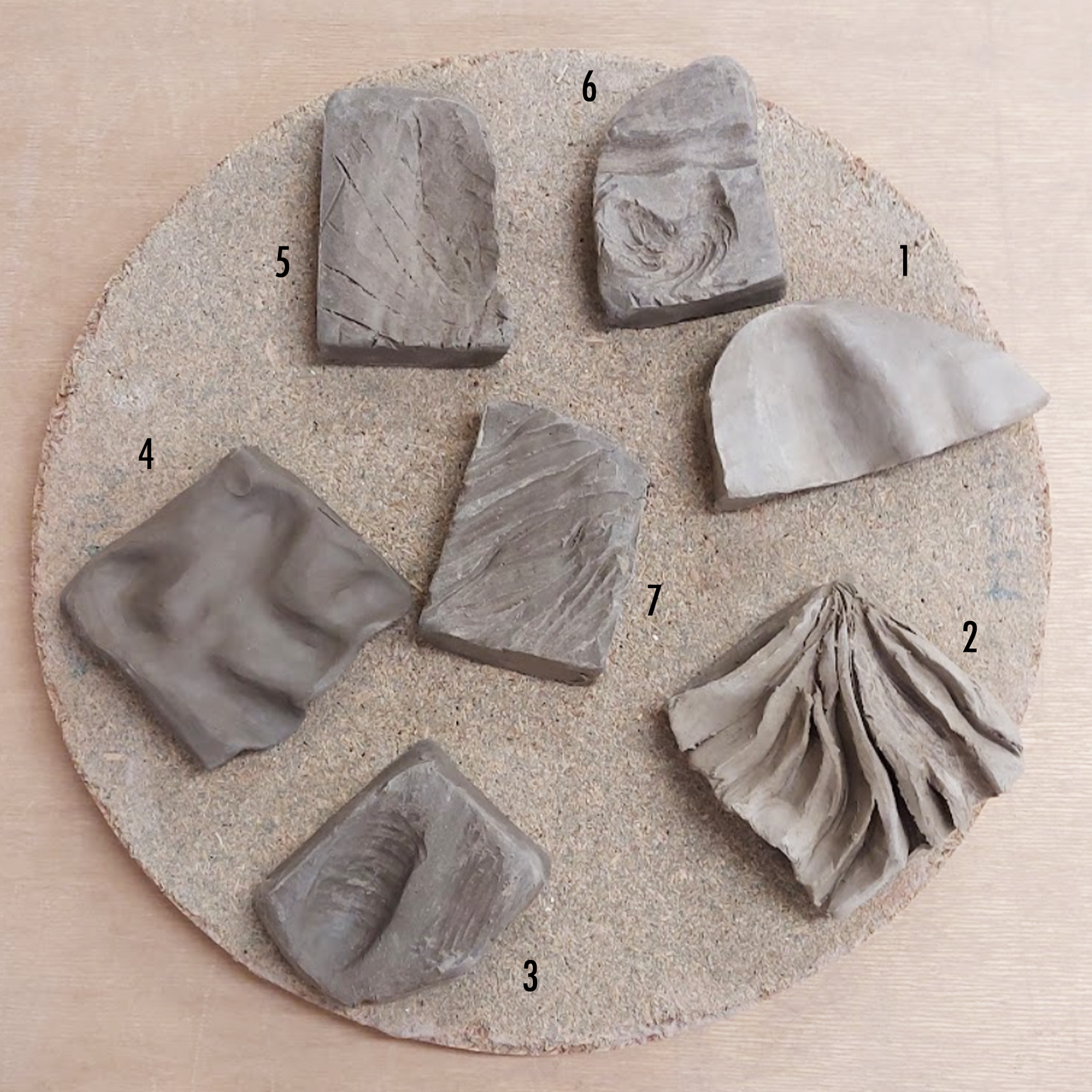
Samples 3,5,6 and 7 were carved into dried clay. I sprayed water on the top of each clay piece to make it easier to carve and used a range of engraving tools to create small creases into the clay. I wanted to create a range of samples but also created curves to see how the textures looked and felt in different spaces.
I learnt that the smoother textures felt better than the coarser samples when dried but I wanted to see how I could sample 2 to my final outcome and make it smoother by maybe coming at it from another approach. I also felt like samples 3 and 5 had more of a paper like texture which meant that I knew not to make smaller engraved lines but to keep my engraving bigger. Overall I think making these material samples was useful towards my making as I know what engraving techniques will better replicate fabric for my final piece.


Above on the right are the fired material samples I created with wet clay and on the left are the fired material samples I created with dry clay.
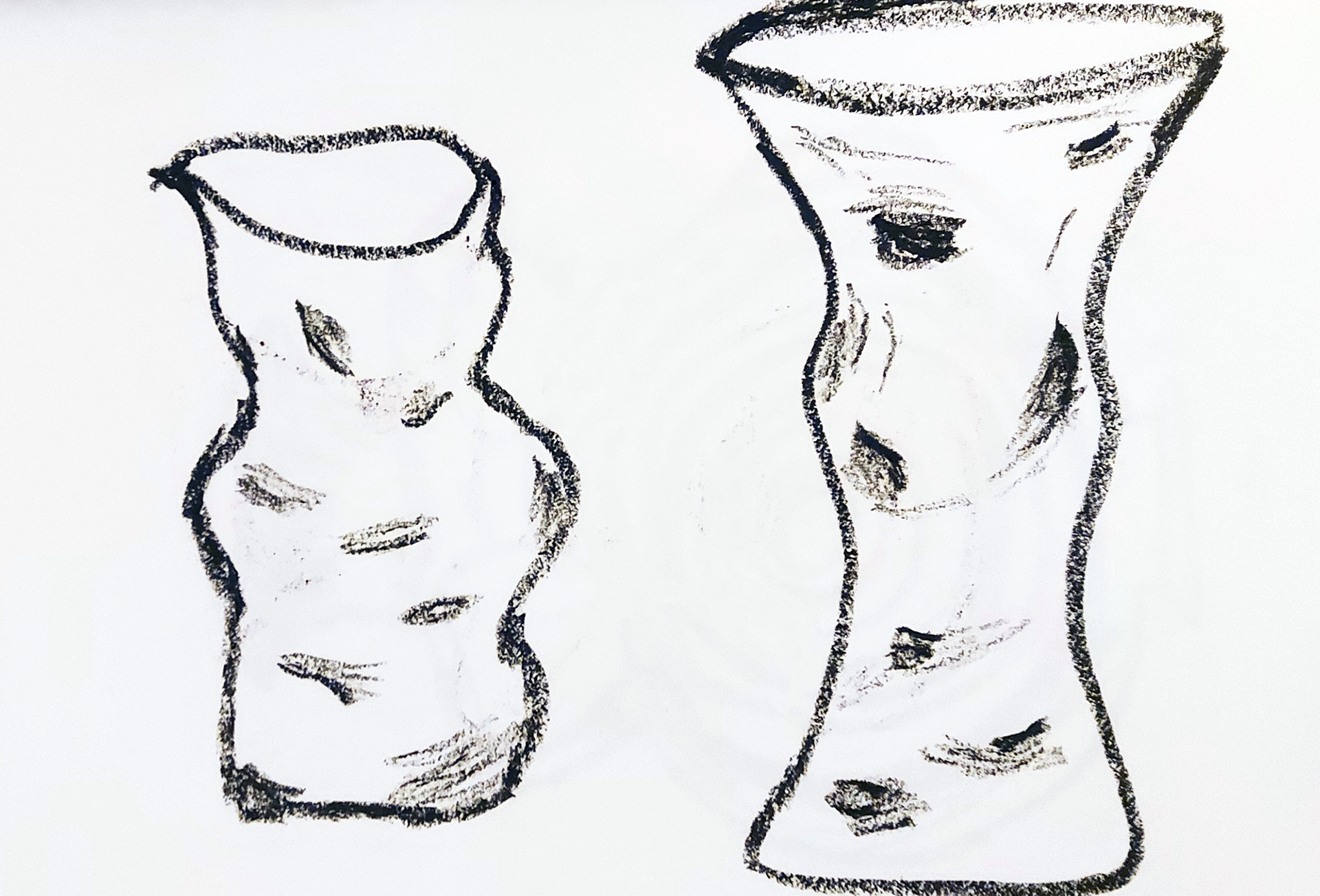
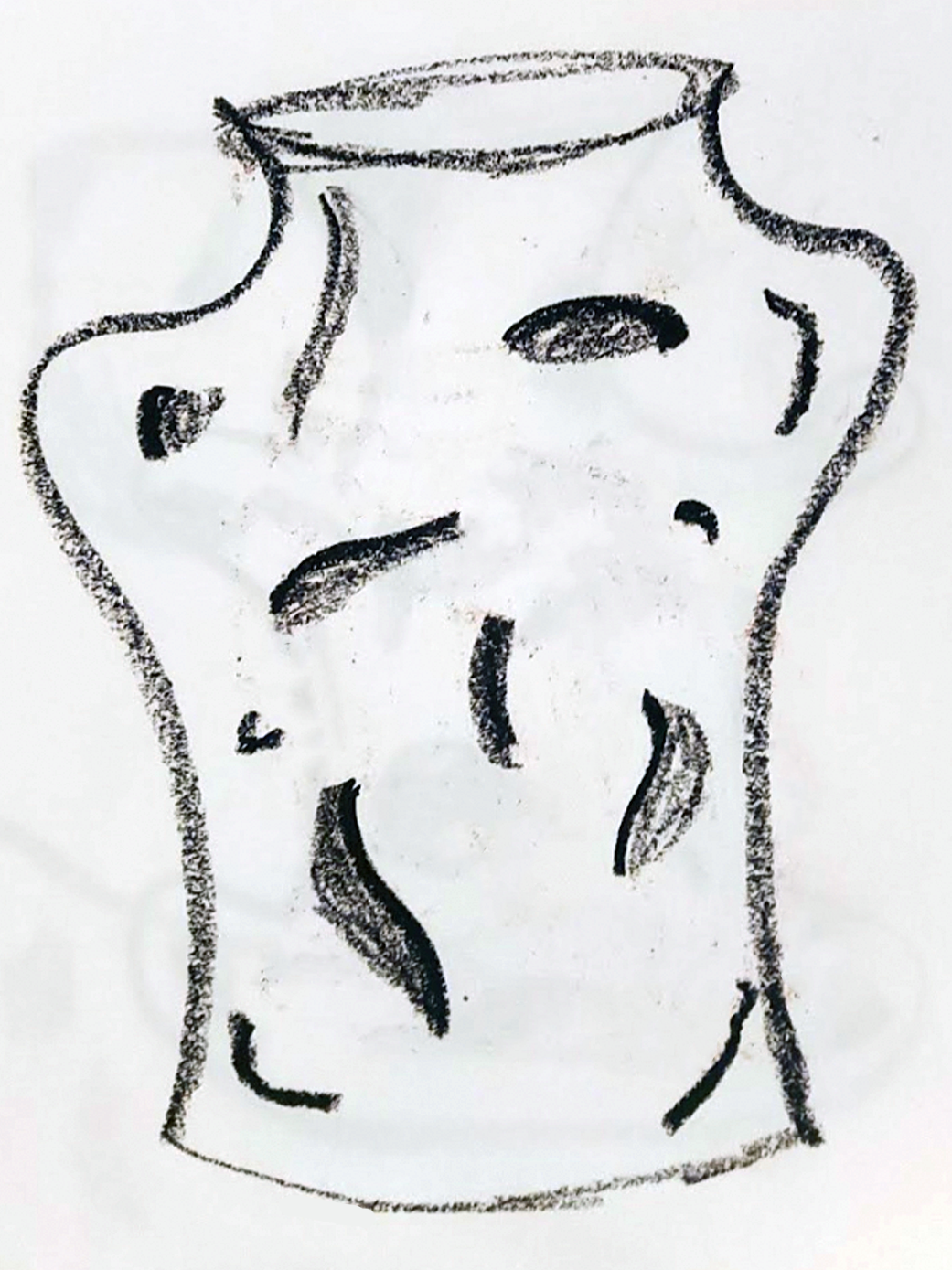
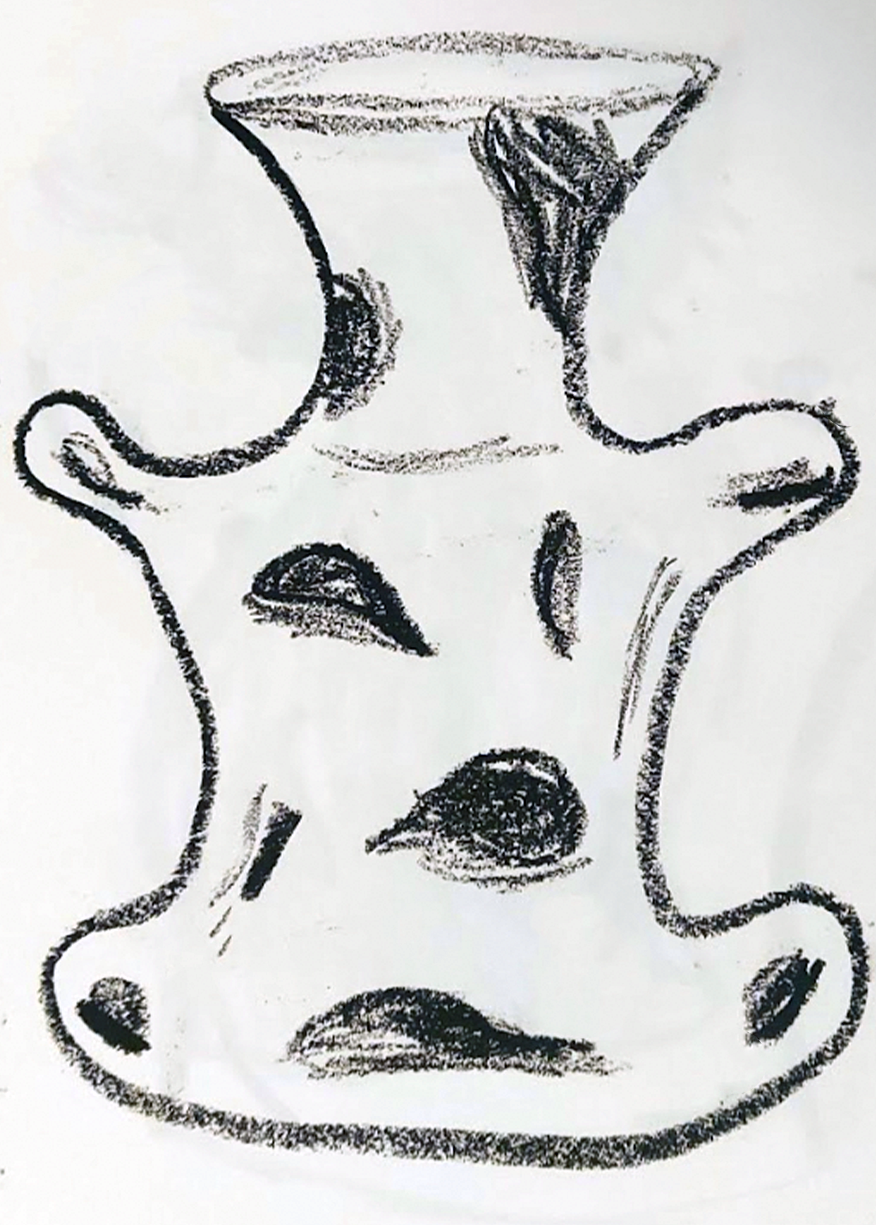

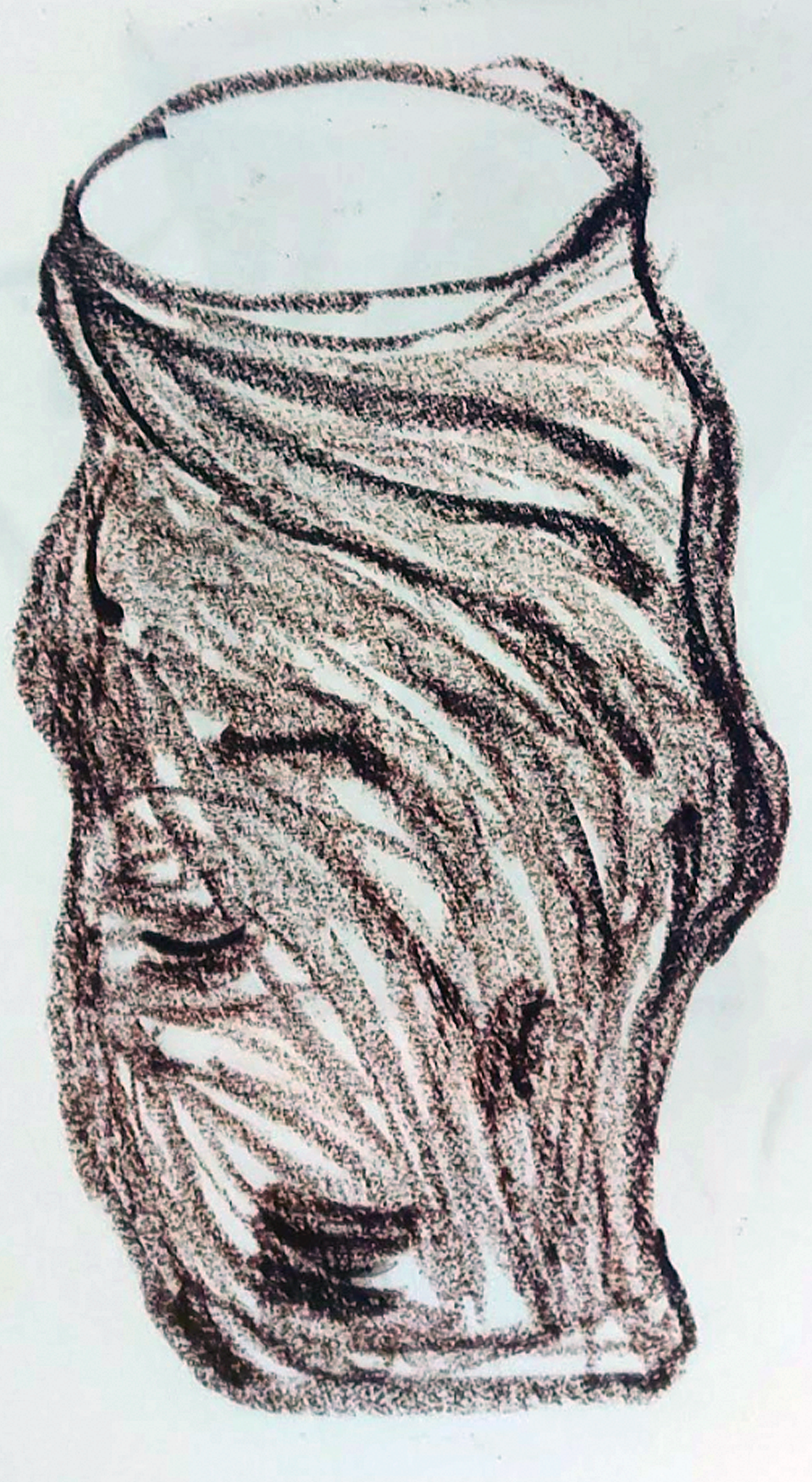
I sketched out some potential final outcomes using a mix of research including my fabric experimentation, Ancient Greek ceramic forms and fabric inspired clay material samples. Even though I will try and complete some of these pieces using these designs, I know from my previous experience using coiling during this project, that my outcomes may not be identical to these sketches. However, my pieces will be heavily inspired by these sketches and I will be interested to see the final outcome.
After sketching out these different ideas inspired by my experimentation in fabric and clay, I decided to chooses a water jug and two different types of cup (one with handles and one without) to create a set including three final outcomes. It was then time to create these pieces using my sketches as reference.